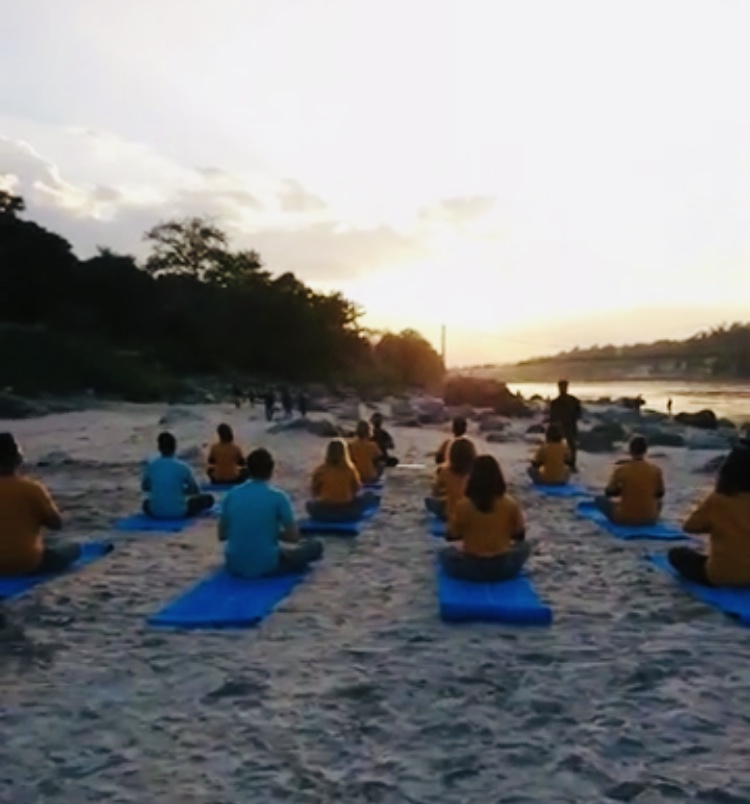
Contented Dazzlement of Surprise – Yoga Teacher Training in India

In December 2019, myself and my group of fellow teacher trainees from various parts of the world completed our 200-hour Yoga Teacher Training in Rishikesh, India. Our 21-day training was physically, emotionally, mentally and spiritually gruelling yet, surprisingly blissful, in equal measure. How was this possible?
In this article, with examples from biology, music, physics, philosophy and literature, I try to answer this paradox. I outline the main elements of our yoga teacher training and why we chose our Yoga school and introduce yoga. Personal testimonies from some of the trainees are also provided in training and back home. Further articles from the point of view of teachers will be published later this month as well as the fuller experience in my book ‘The Return Home’ due for publication some time in 2020.
We dedicate this article to all the masters past and present who have created and transmitted such a profoundly powerful body of knowledge, with our deepest thanks to our master teachers, Sri Sri Ravi Shankar, our Ved Niketan Swami, Sri Umesh Yogi, Kalpesh Patil, Dr Poonam, Sreeprakash Pushkaran, Celine (Namaste Voyages en Inde), Gabriella, Linyi, and all the wonderful staff at the Ved Niketan Ashram in Rishikesh, India.
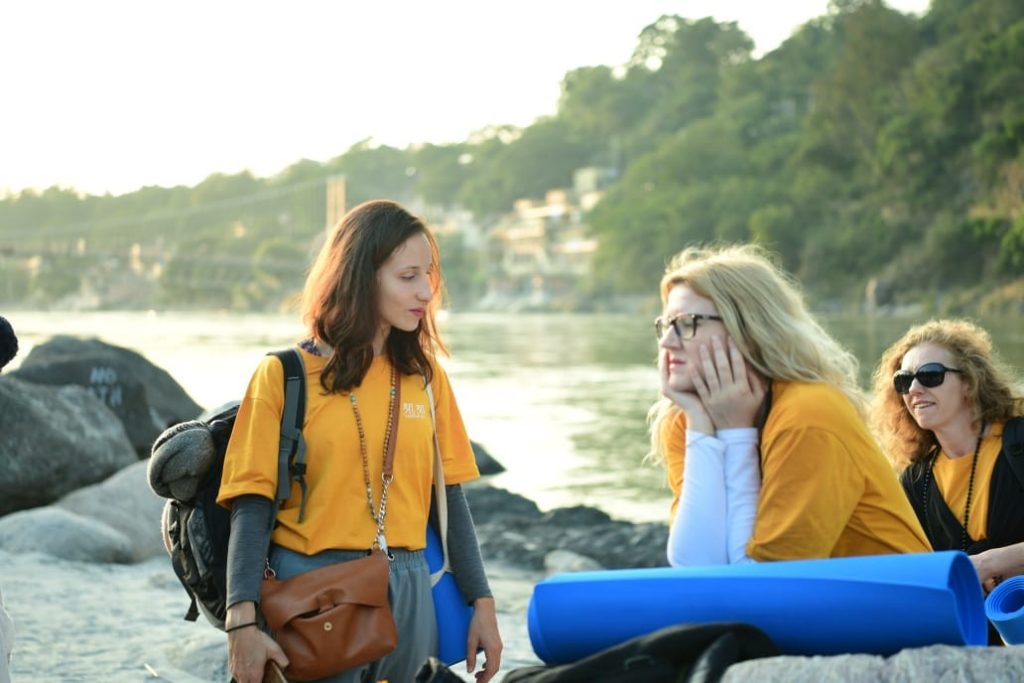
Left: ‘Dorm sisters – Vero Marais, Irena Grgona and Marie Capoen, Ganga, Rishikesh, India’
Contented Dazzlement of Surprise
“Statistically, the probability of any one of us being here is so small that you’d think the mere fact of existing would keep us all in a contented dazzlement of surprise.”
Lewis Thomas, The Lives of a Cell: Notes of a Biology Watcher
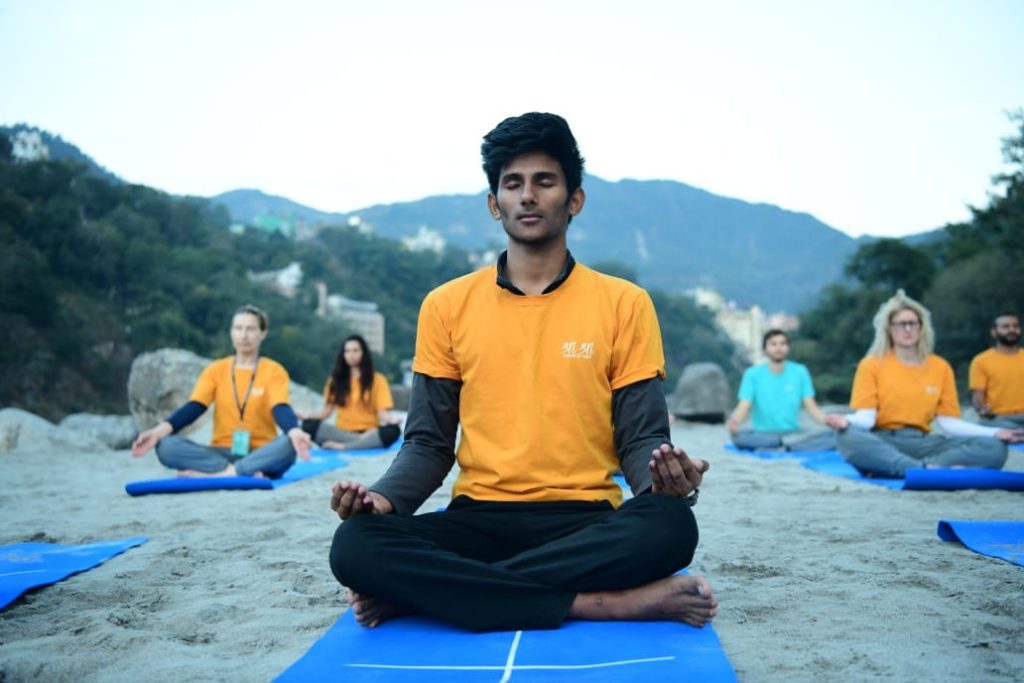
When I looked for the right words to describe my experience, the words of cellular biologist Lewis Thomas came into my mind. I have long been an admirer of his work. In his seminal book, ‘The Lives of Cells’ he marvelled at the beauty, and statistical improbability, of much of the life he observed, and which he studied, as a scientist, happening. This resonated with me and perfectly described my experience.
Why Sri Sri School of Yoga in Rishikesh, India?
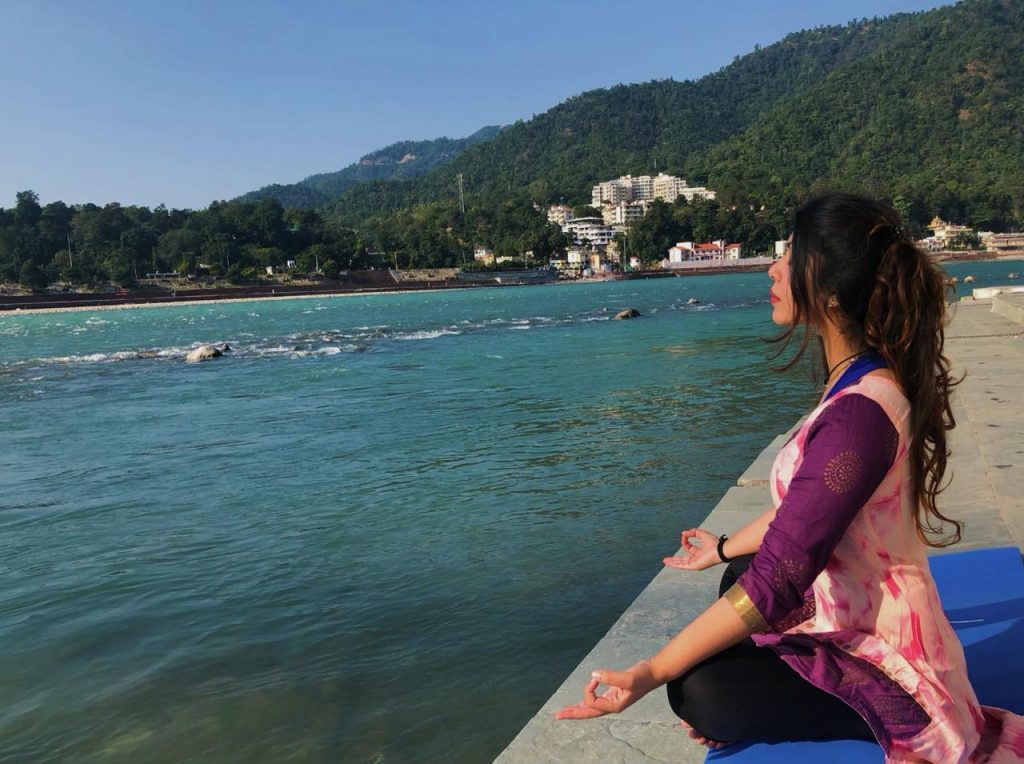
“The most beautiful , cathartic journey of my life under the guidance of my beloved guru master teacher. Every action, every moment of this course in Rishikesh was divine. I still feel the calm, compassion and love of all the people I met through this journey. This is only the beginning. Yogakshemam Vahaamyaham.” (verse 9.22, Bhagavad Gita, “Those persons who, becoming non-different from Me and meditative, worship Me everywhere, for them, who are ever attached (to Me), I arrange for securing what they lack and preserving what they have.”)
Priyanka Nambiar, psychologist and social work scientist, Mumbai, India
Aside from the fact that the yoga teacher training needs to provide a bona fide internationally and Indian Government recognised yoga accreditations, choosing a Yoga Teacher school is a very personal choice.
My fellow trainees’ and my choice was narrowed down by our combined wishes to train in the birthplace of Yoga in Rishikesh, India, at the foothills of the Himalayas, to be in a smaller ashram, and to receive reputable teachings in their purest and most authentic form of Indian yoga tradition. For us this meant training with the Sri Sri yoga and meditation school which was founded by humanitarian and Indian spiritual master teacher, Sri Sri Ravi Shankar.
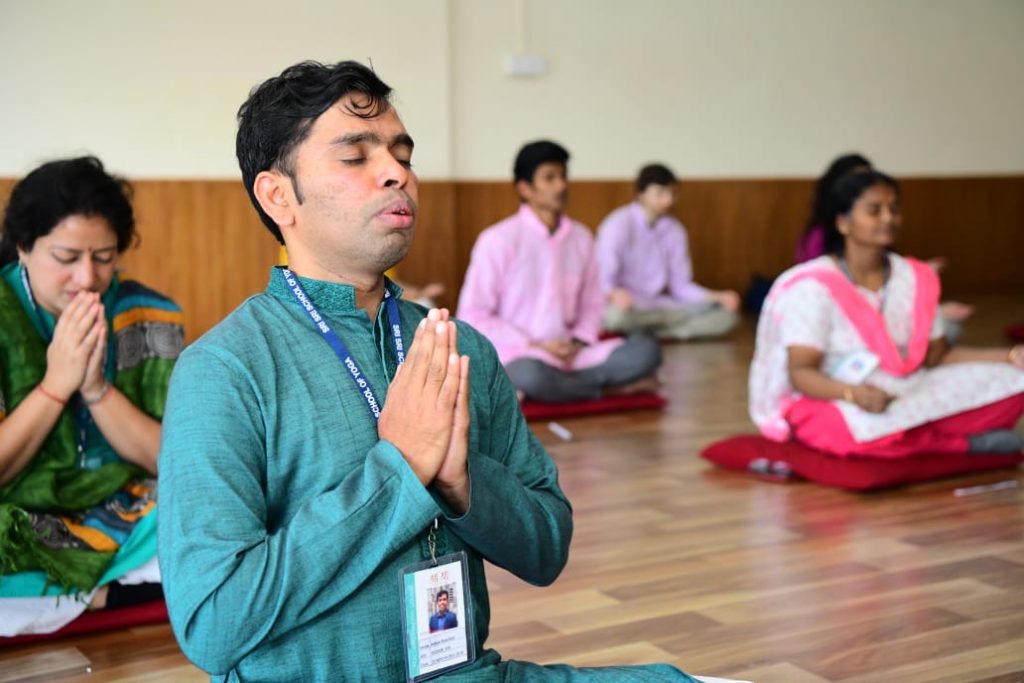
The school’s curriculum contains all the main elements of the International Yoga Alliance curriculum and we wished to receive the teachings from living meditation and yoga masters in India who had walked their walk and experienced, and experimented with, yoga themselves in the highest taught form.
What is Yoga?
Yoga is the subject of study of many academics and philosophers and is a challenging question to answer. Yoga comes from the Sanskrit word ‘yuj’ meaning ‘Union’.
“Yoga truly allows one to stay in the present moment with a smile on your face. Once one has realized the knowledge of yoga then he/she can become immersed in the love and joy of life to the fullest potential.”
James Carter, Psychology Student, USA
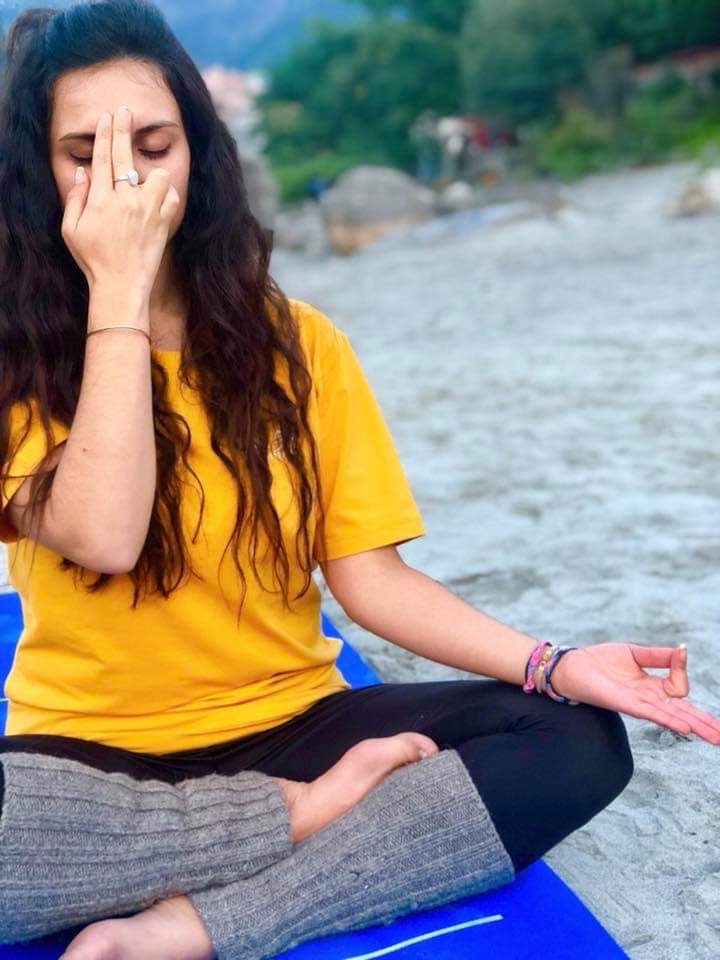
In French: “Le yoga regroupe et la connaissance, et le seva, karma yoga, ashtanga yoga et encore d’autres elements. Le yoga ne revient pas seulement a s’asseoir sur son tapis de yoga pour mediter ou pour les asanas. Le yoga a Sri Sri va au dela de cela. On est Yoga. On vit le Yoga et comment on atteint la connaissance. Pour moi la devotion se passe a travers de mon service, ma pratique (sadhana) et tout le reste. ”
Rinda Ozturk, child protection educator/worker, Lyon, France
In English: “ Yoga for me includes knowledge, seva, karma, ashtanga and many more elements from the very long lineage of thousands of years. Yoga is not just sitting on our mat to meditate or to pracrice our asanas. Yoga at Sri Sri includes all this and so much more. We become yoga. We live yoga and learn through our becoming how to reach knowledge in a cycle. For me devotion happens through my service (seva), my practice (sadhana) and all the rest.”
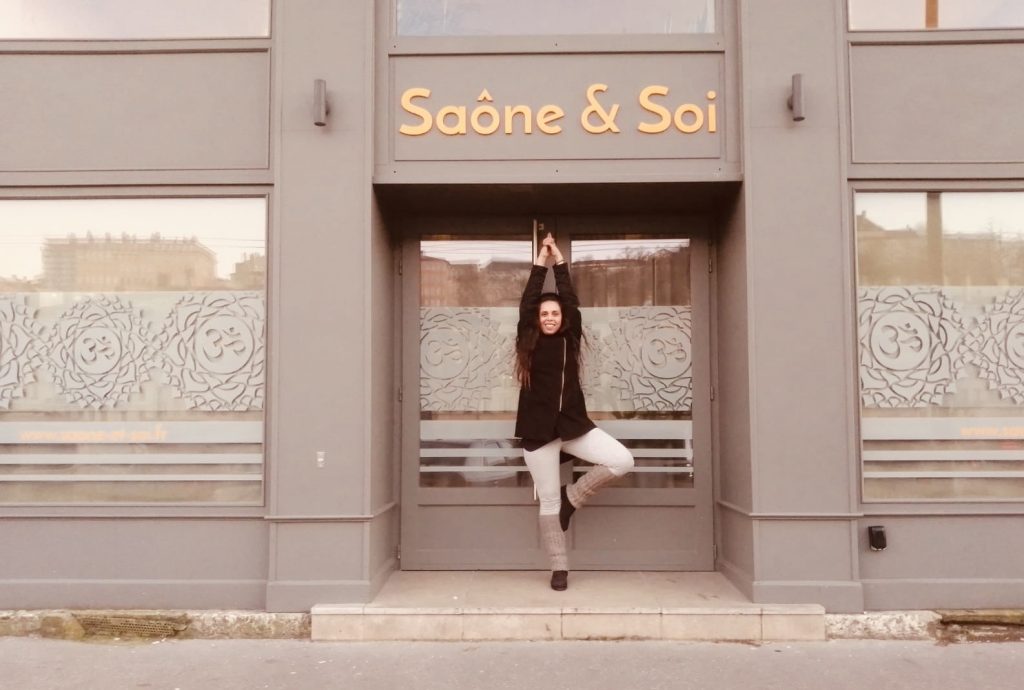
Yoga as Skill In Action
“ Yogaha Karmasu Kaushalam”
Yoga is Skill in Action.Bhagavd Gita
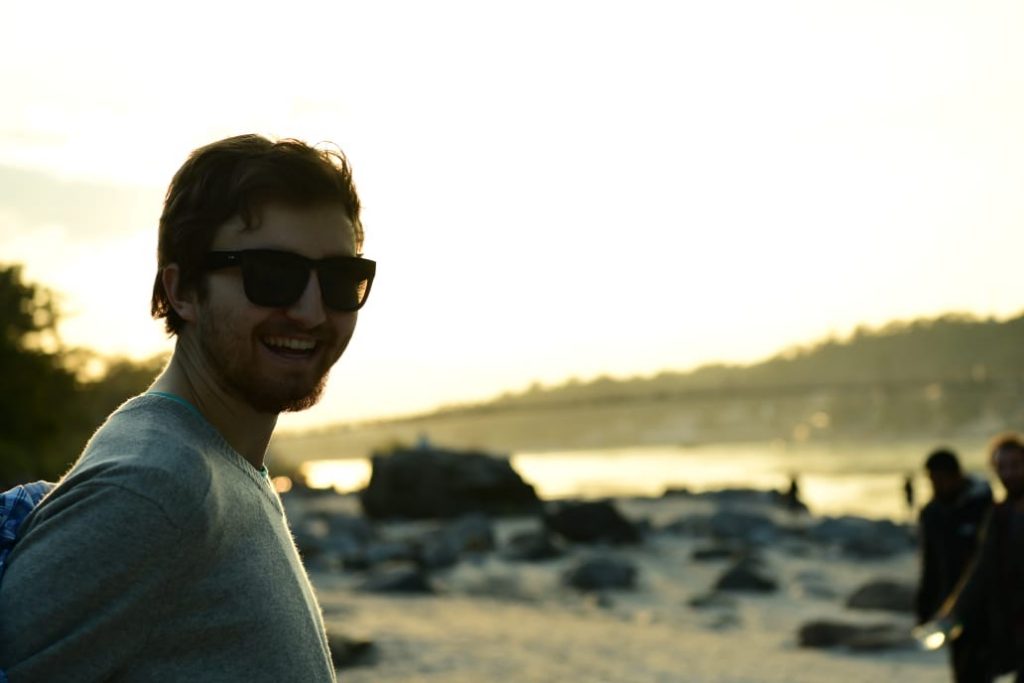
“Yoga is the union of body, mind, breath with complete awareness. One aspect of the yoga way is to provide us tools and techniques to lead a stress-free and tension-free life.”
Sri Sri Ravi Shankar
Yoga was developed in India and is mentioned about 10,000 years ago in the Vedas and Upanishads. Yoga is one of the six systems or´darshans’ of Indian philosophy. Ayurveda is a traditional system of healthcare. In keeping with the tradition of the times of imparting knowledge it was only transmitted to those deemed ‘worthy’ of receiving such knowledge.
The Sri Sri yoga teacher training truly was a life changing experience with awesome people. Yoga to me means skill in action which can be applied in every moment of your life. Whether it is making an important descision or talking to people, yoga will take a role in that action. It’s not just the hour spent on the mat but the whole life. Yoga truly allows one to stay in the present moment with a smile on your face. Once one has realized the knowledge of yoga then he/she can become immersed in the love and joy of life to the fullest potential.
James Carter, Psychology Student, USA
Yoga transcends every religion and culture because the knowledge has universal applications which are in line with much of what I learnt, for example, in Cognitive Behavioural Therapy (CBT), transpersonal psychology or positive psychology.
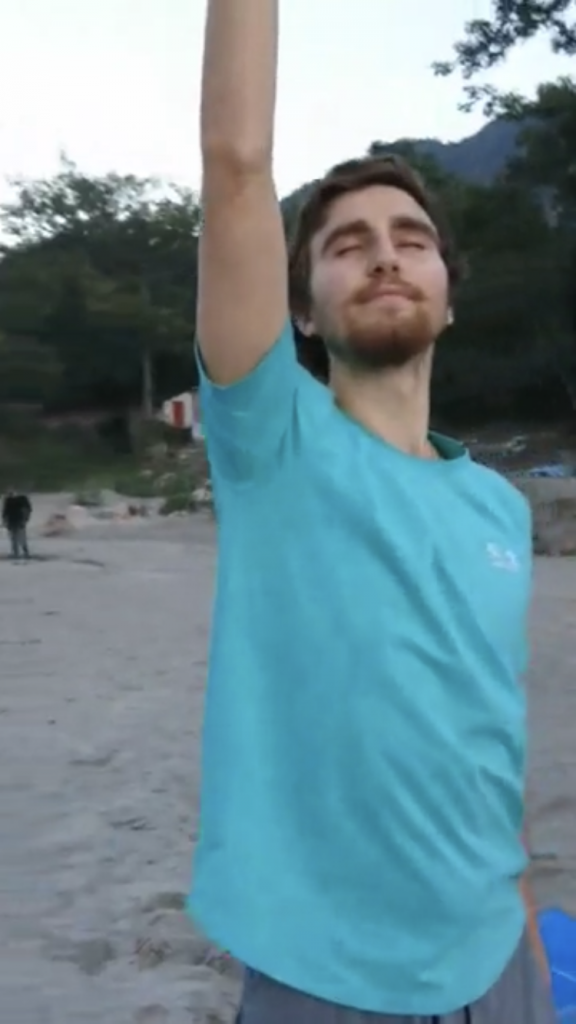
“Yoga is a comprehensive system for wellbeing on all levels: physical, mental, emotional and spiritual. While Yoga is often equated with Hatha Yoga, the well-known system of postures and breathing techniques, Hatha Yoga is only a part of the overall discipline of Yoga.”
Yoga Alliance
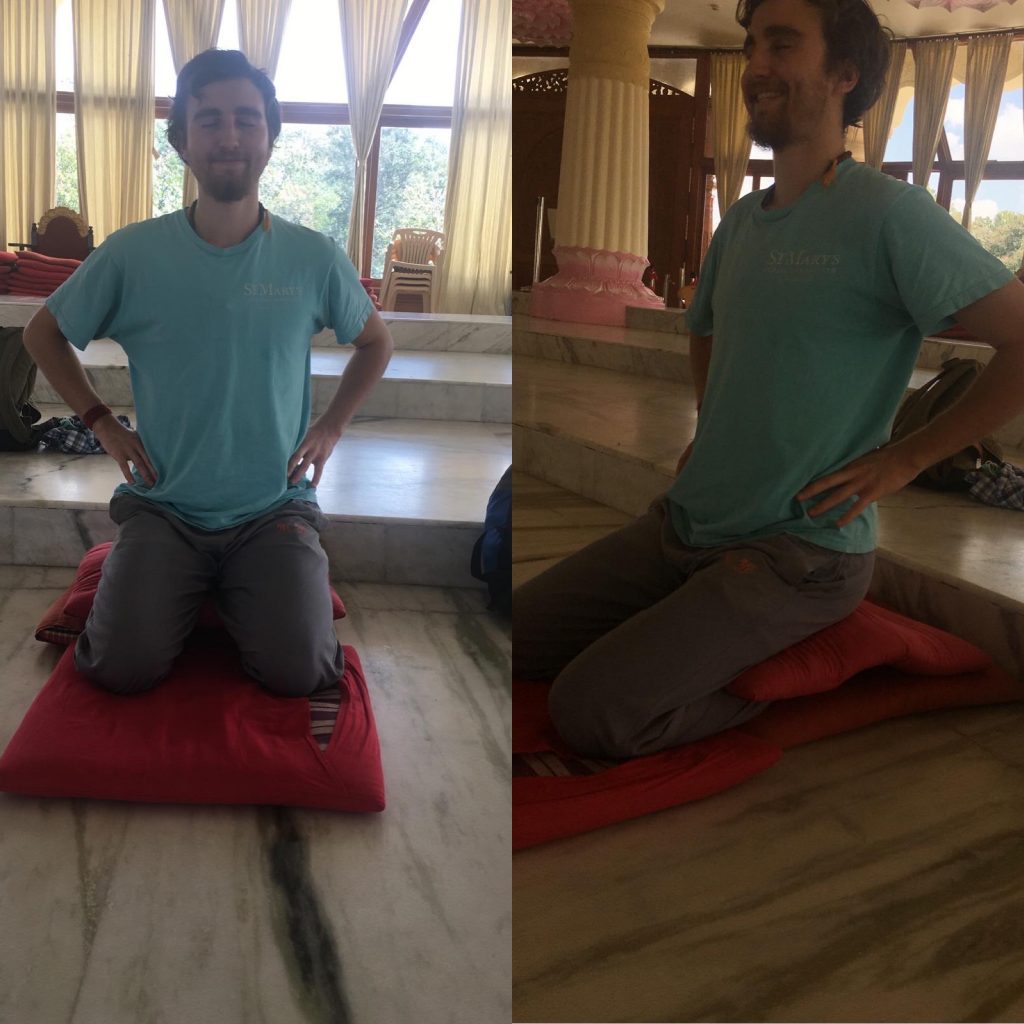
“I was introduced to yoga from an early age. I came to the conclusion that yoga is about meditation and so asanas are actually meditation in motion.”
James Carter, psychology student, USA
What does a typical Yoga Teacher Training Day look like?
The table below summarises our daily schedule, with some variations to include teachings and feedback experience and a couple of afternoons allocated towards our end of training project.
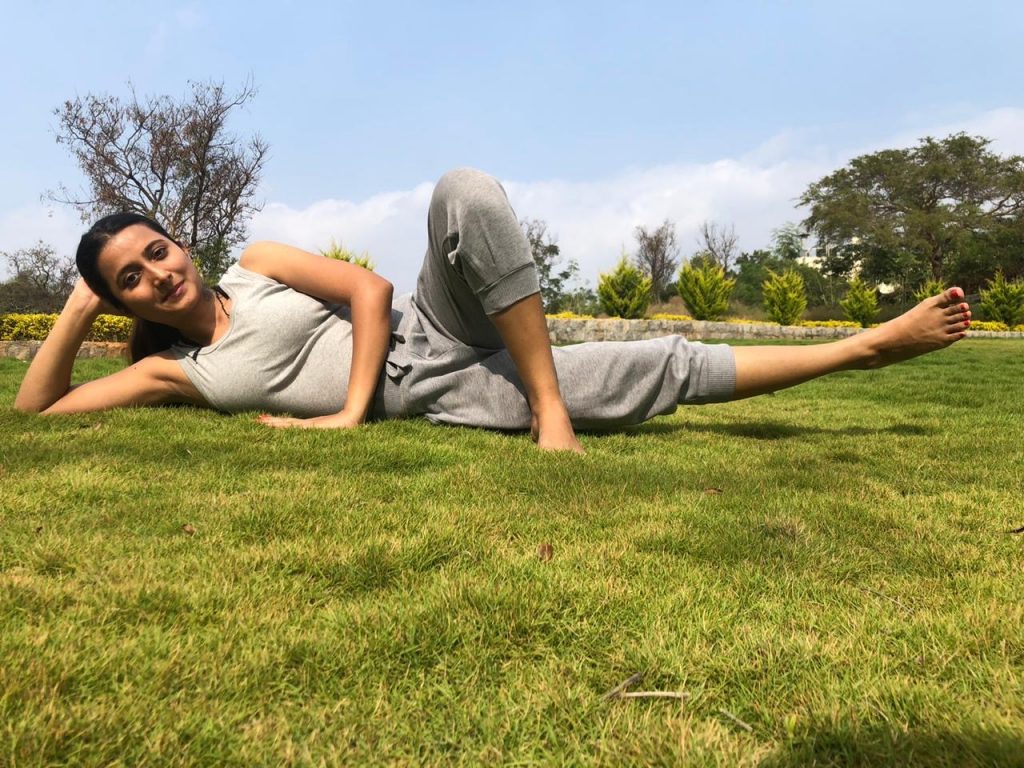

Despite early mornings and late evenings, we all felt energised and ready to go! We credit all practices and especially meditation, which for many of us improved not only our flexibility in thinking but also increased our body flexibility.
The Philosophical Background of Yoga – Vedas, Bhagavad Gita, Patanjali’s Yoga Sutra, Hatha Yoga Pradipika and Modern Yoga
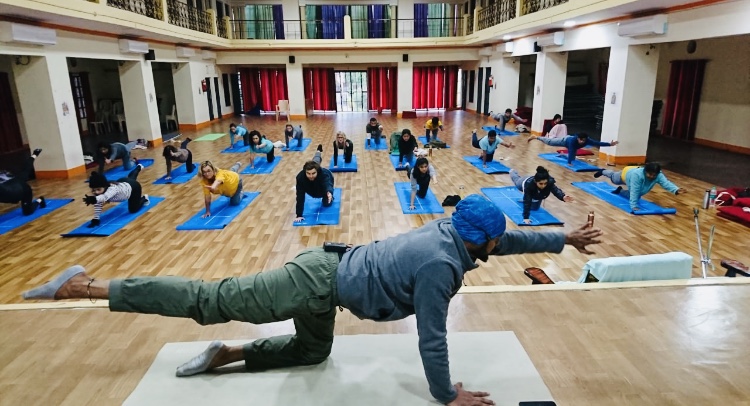
Vedic science is a holistic and sophisticated system of knowledge from the Vedas, which originated in India. The great Maharishi Ved Vyasa collated and classified the Vedas and wrote the Brahma Sutras
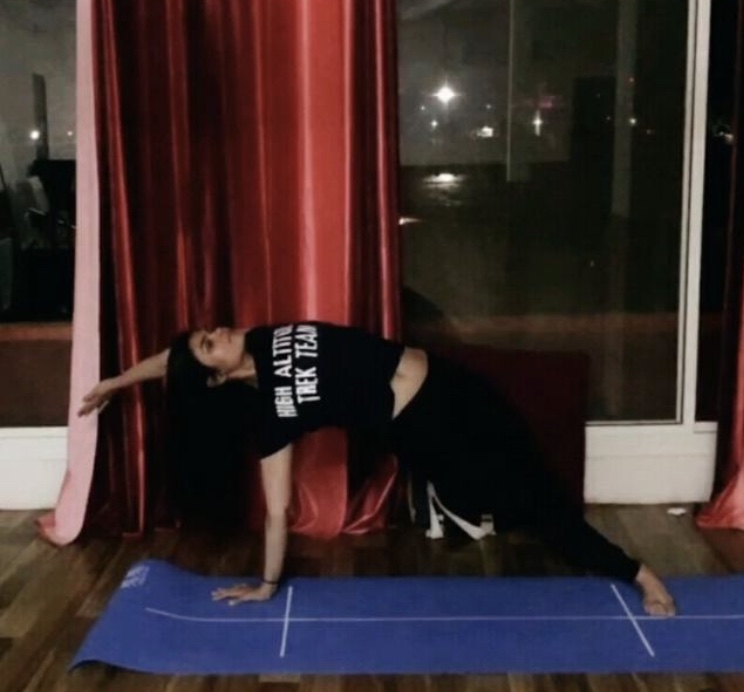
So many brilliant Western minds including French philosopher Voltaire and American Henry David Thoreau marvelled about Vedic knowledge. It’s interesting that Gandhi in turn was inspired by Thoreau’s civil disobedience concept! Beautiful.
Voltaire wrote: “The Veda was the most precious gift for which the West had ever been indebted to the East.
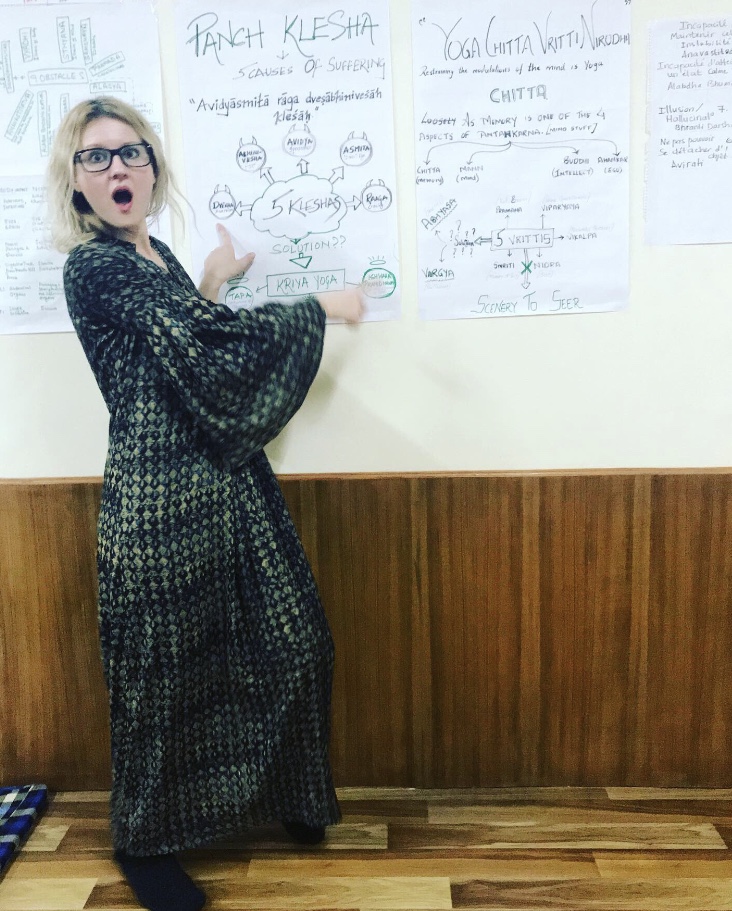
In the pre-classical period two seminal texts, the Bhagavad Gita and the Upanishads were scripted where several references to Yoga were made. The classical era includes Maharishi Patanjali’s ‘yoga sutras’ in which he describes the ‘eight-fold path’ otherwise known as ‘ashtanga yoga’. This era can really be seen as an attempt towards ‘mastery of the mind’ through yogic practices. In the post-classical era and modern era to follow many more paths of Yoga and masters followed, too many to name. The most notable works include ‘Hatha Yoga Pradipika by Swami Swatmarama.
Various Paths of Yoga: Hatha, Ashtanga and other Types of Yoga
“Yoga anga anusthanad ashuddhi ksaya jnana diptih a viveka khyateh”
“By the sustained practice of the the eight limbs of yoga, the impurities are destroyed, and the light of wisdom, and discrimination shines forth.”
Yoga Sutra 2.28. Patanjali
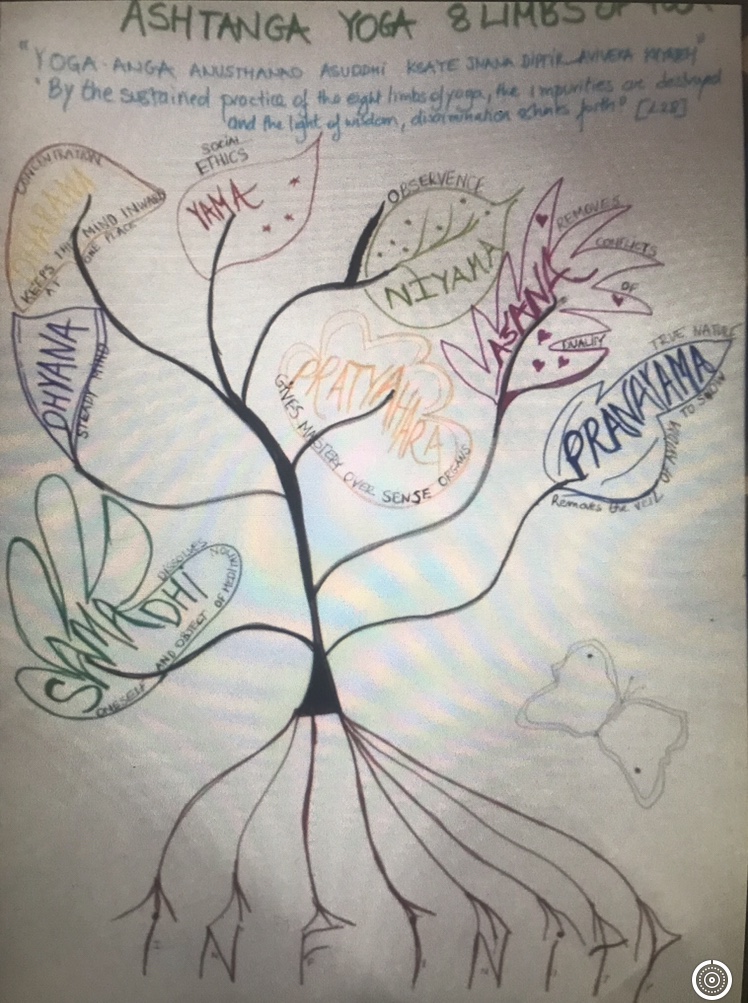
Once again this topic is very vast, so in sum, various paths of yoga were introduced from which various practices were embraced in our training and which we also learnt. They are:
Jnana Yoga: the path of self transcending knowledge
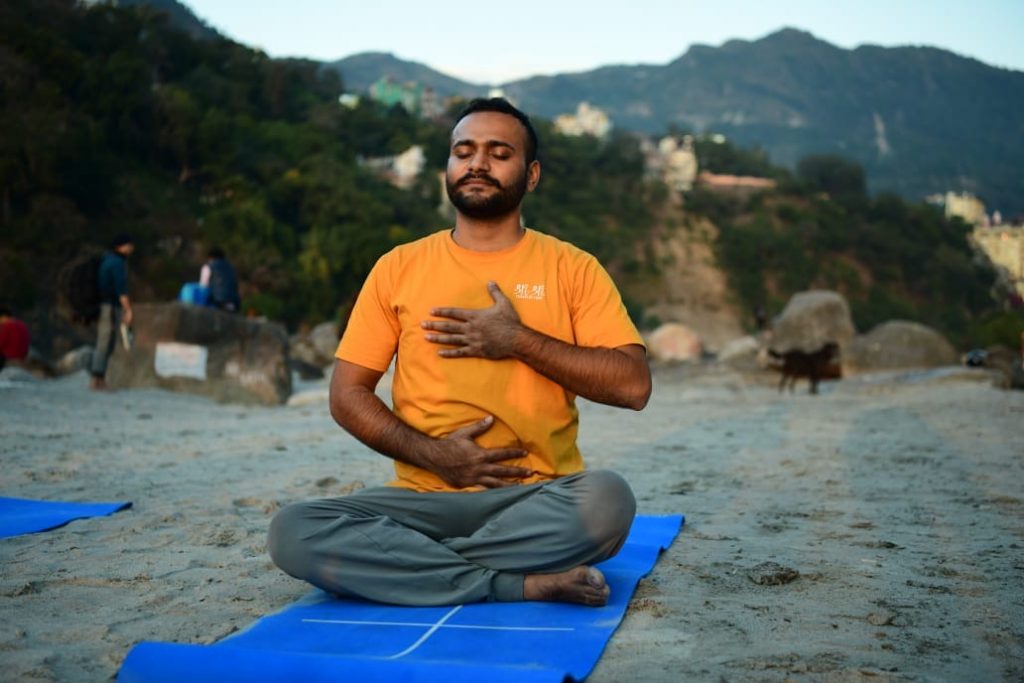
Bhakti Yoga: the path of devotion
“I consider myself a simple man who felt a deep desire to experience the knowledge and my wish was fulfilled when I came to Rishikesh to do the yoga teacher training. I had saved for many months to purchase a camera. Instead I chose to do this course. This was an ultimate journey for me where I learn about ashtang yoga and found bhakti (devotion) in me, especially while singing in satsang. I met such beautiful human beings from different parts of the globe and I am eternally grateful for this opportunity. I also felt the grace of our guru (master teacher) and…not buying that camera was really worth it!”
Prince Dahdwal, Haryana, India
Karma Yoga: the path of selfless action
“Animals have genes for altruism, and those genes have been selected in the evolution of many creatures because of the advantage they confer for the continuing survival of the species.”
Lewis Thomas, Late Night Thoughts on Listening to Mahler’s Ninth Symphony
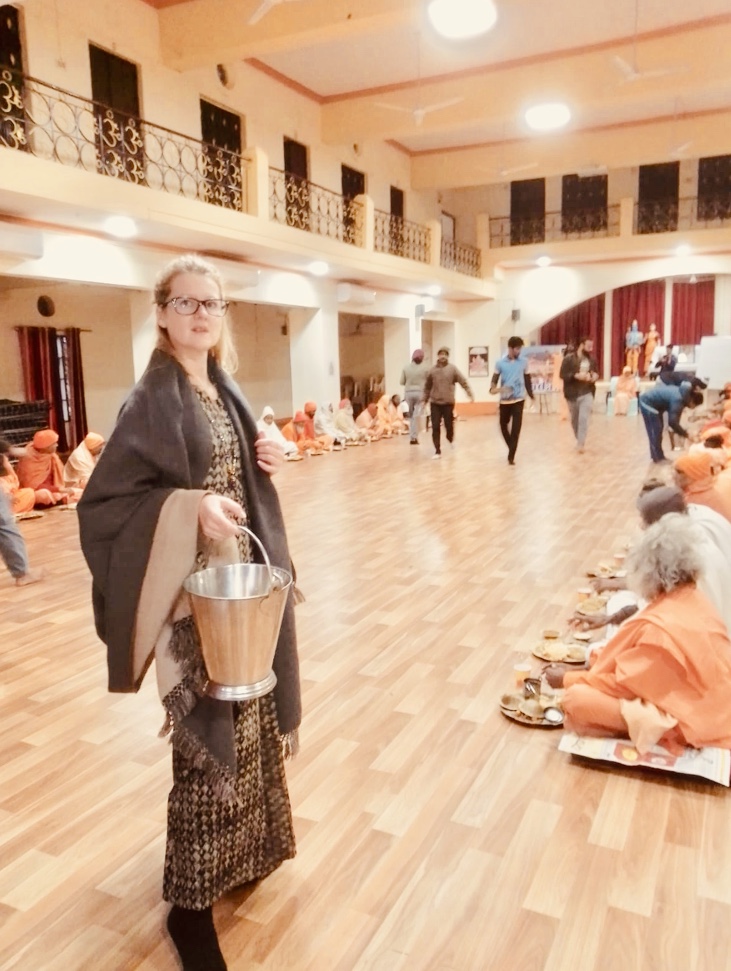
Raja Yoga/Dhyana Yoga: the path of effortlessness.
Patanjali’s ‘ashtanga yoga’ (eight limbs) enunciated in his yoga sutras went on to be called in modern times by Swami Vivekananda as ‘Raja Yoga’, the royal way.
At Sri Sri school of yoga the main elements of our training comprised asana (physical postures), pranayama (breathing), meditation, seva, knowledge and satsang.
Sri Sri yoga is an integrated path that contains all the elements of yoga and more importantly proven and effective techniques for the human being to thrive. Yoga also includes celebrations of various kinds as below my birthday.
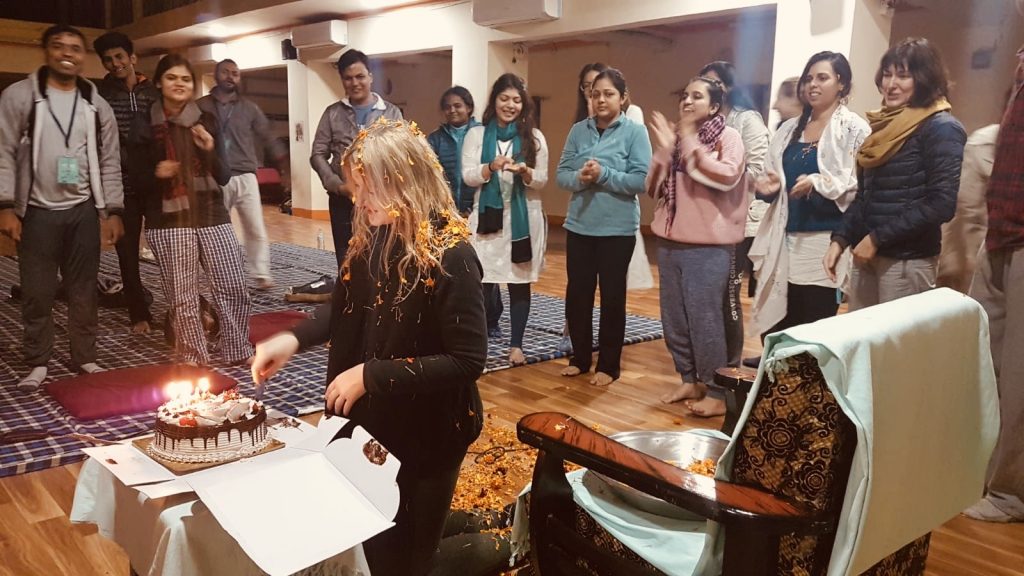
Gurudev Sri Sri Ravishankar Ji emphasises effortless meditation to experience pure awareness and higher states of consciousness. He also ‘democratised’ yoga and meditation, sharing many former hidden meditation widely with anyone wishing to learn.
“Yoga truly allows one to stay in the present moment with a smile on your face. Once one has realized the knowledge of yoga then he/she can become immersed in the love and joy of life to the fullest potential. “
James Carter, Psychology Student
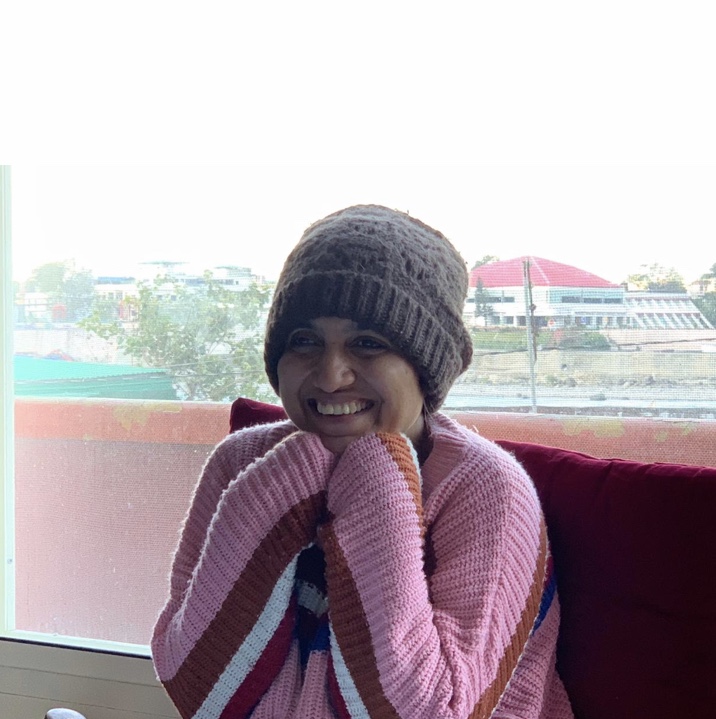
Purpose of Yoga
“Heyam dukhamanagatam”
“The purpose of yoga is to stop the misery before it comes”
(II Sutra 16, Yoga Sutras, Patanjali)
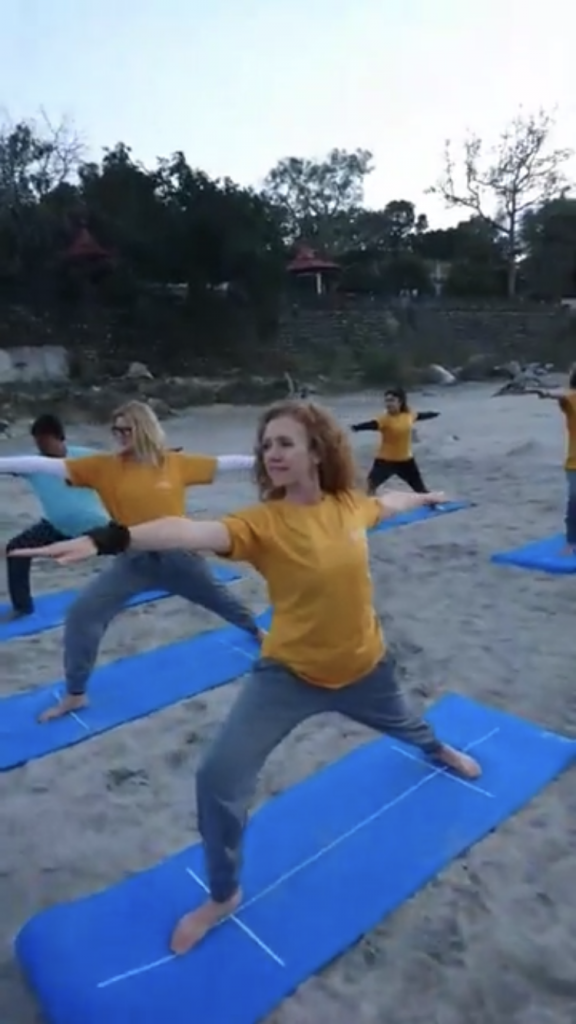
In French: “Au dela d’un voyage formidable en Inde, cela a ete aussi pour moi un grand voyage interieur, bien au dela de ce que je pouvais esperer de cette formation. L’approche des professeurs, accompagnants, de tous les participants etait exceptionelle et tres soutenante. Je me sens transformee, regeneree, pleine d’energie et avec une enorme envie de transmettre toutes ces connaissances et merveilleuses decouvertes.“
In English: “Aside from the fact that this voyage in India was incredible, this yoga teacher training was for me an immense inner journey which far exceeded my expecations from this training. The approach from the incredible teachers and all staff together with my fellow yogi trainees made this whole experience unforgettable. I feel transformed, reborn, full of energy and with an immense desire to share what I have learnt with those who wish to learn.”
Marie Capoen, Osteopath, Rennes, France
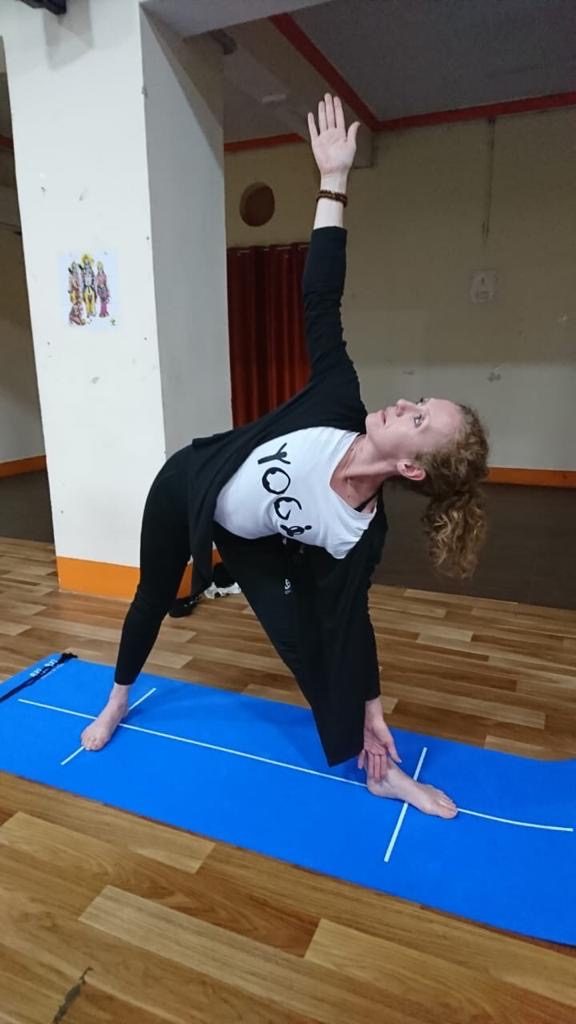
What yoga can help us with is learn to ‘regulate’ our nervous system and biology, to re-direct negative thoughts, emotions or feeling through our practices of yoga.
Asana (physical postures) as ‘Meditation in Motion’ (James Carter)
“Tad eva artha matra nirbhasam svarupa shunyam iva samadhi”
“When effortlessly dwelling in meditation, the difference between oneself and the object of meditation dissolves. This state is samadhi, an undisturbed equanimous state of mind.”
Yoga Sutra 3.3. Patanjali
Most people come to yoga teacher training for asanas. The way we learnt asanas with all our teachers and especially with asanas and yogi Master, Kalpesh, was life-changing.
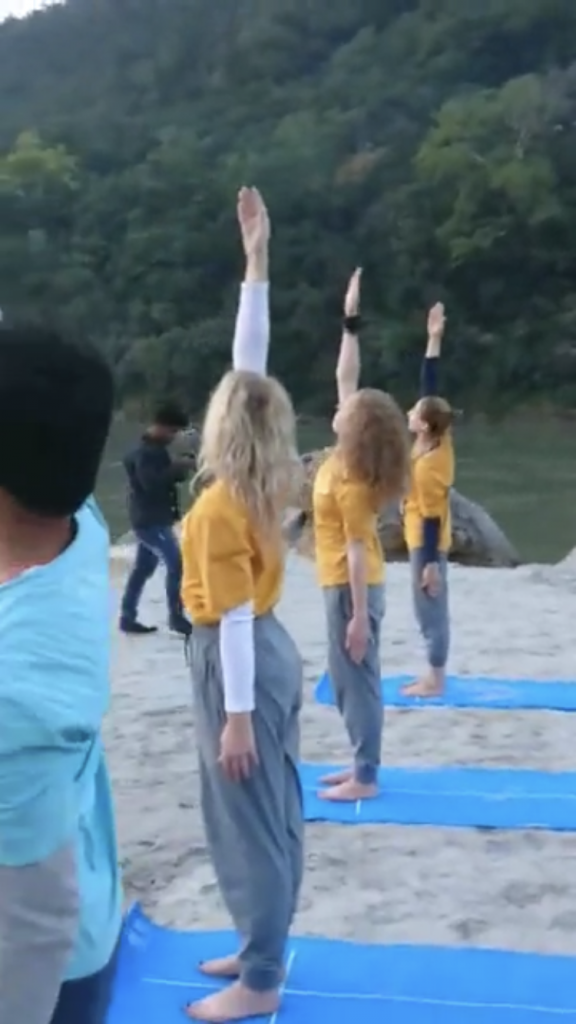
As James shared it so well, asanas become meditative and one enters ‘flow’ as described by American psychologist Mihaly Csikszentmihalyi.
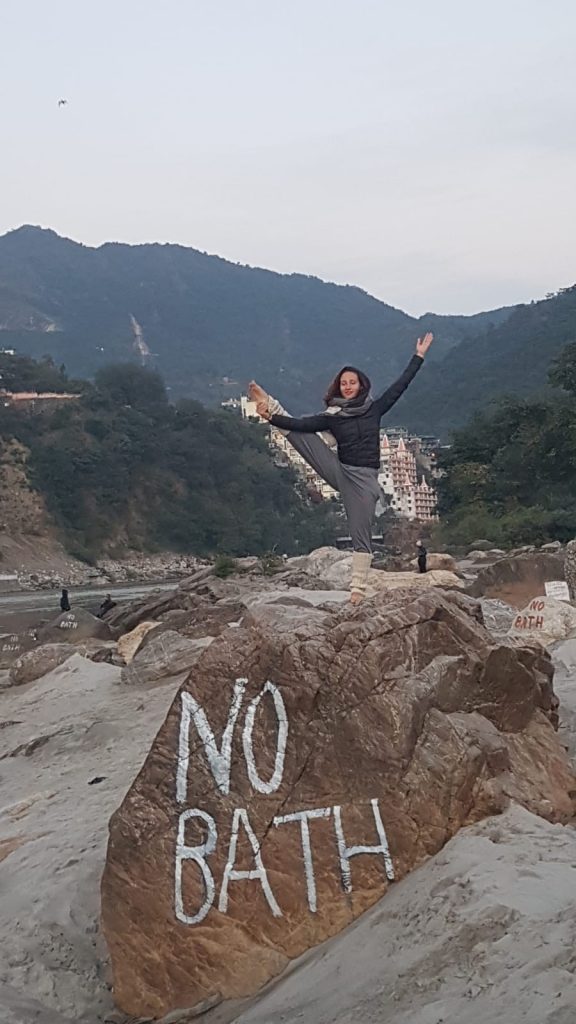
In French: “Je n’en retire que du positif. J’ai pu ameliorer ma posture. On apprend a aligner notre corps et ce cours permet vraiment d’apprendre precisement comment se positioner pour avoir des benefices au niveau physique. Ensuite le pranayama (respiration) et meditation apportent beaucoup de serenite et calme interieur. J’ai enormement gagne en serenite. Ensuite il ya tout l’aspect philosophique et l’anatomie. Tous les cours viennent apporter du sens a notre pratique. Humainement, j’ai beaucoup appris dans cette formation. Chacun vient d’horizon different, de vecu different, et nous formons une famille et vivons des moments tres tres riches et tres tres forts avec beaucoup d’amour et de bienveillance. Cela est quelque chose qui m’a beaucoup touchee. ”
In English: “I only take with me positive experiences. I was able to better my postures as we learn correct alignment and common misalignment. We then learn breathing techniques (pranayama) as well as meditation which brought me much serenity and peace inside. I gained so much in calm within me. There is then the whole philosophical and technical (anatomy and physiology) teachings. All the classes help us make sense of our physical practices. On the human level I leant a great deal. Every participant came from different walks of life with different life experiences. We became a family and lived very profoundly connecting moments. Our shared experience was extremely rich with much love and compassion. This brought so much to me and my life.”
Veronique Marais, Paris, Enseignente en activities physiques adaptees (physical education teacher)
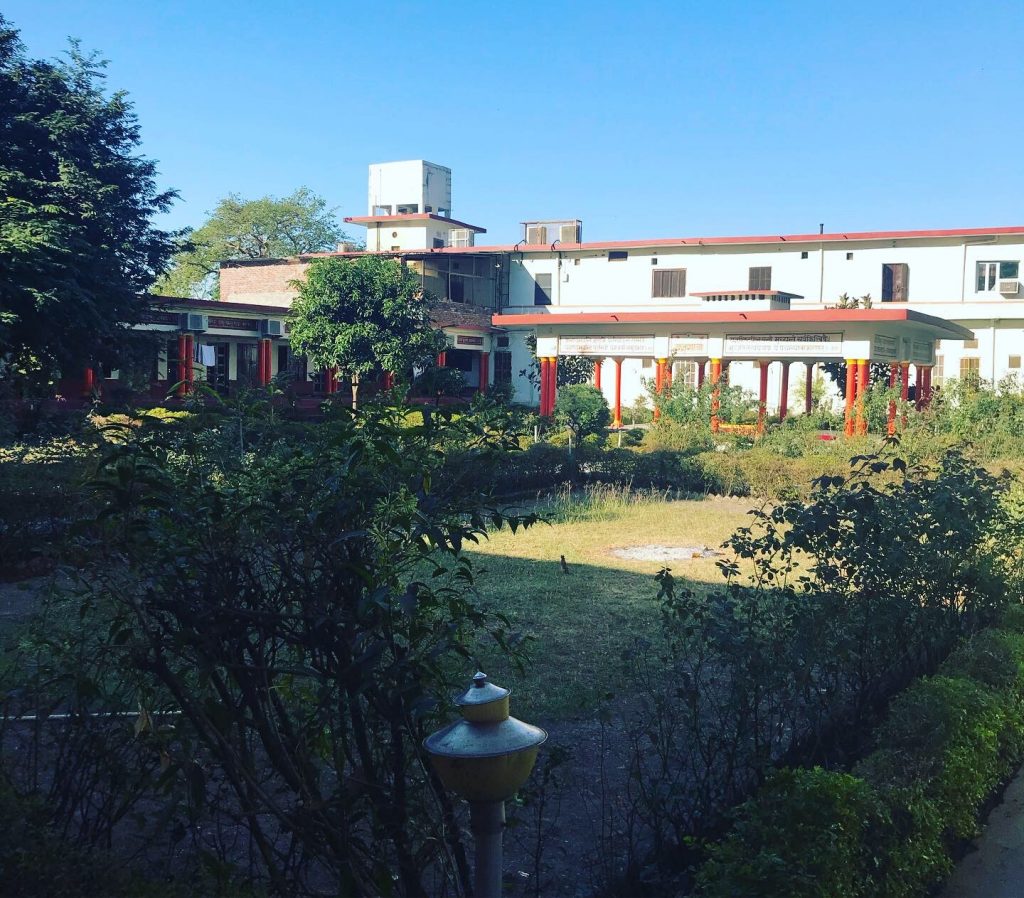
Seva (Selfless Service)
“Only a life lived for others is a life worthwhile.”
Albert Einstein, Youth, Jun. 1932
Seva is a Sanskrit term meaning “act of selfless service”, from the words saha, meaning “with that,” and eva, meaning “too,” which together mean “together with.”

Seva was an integral part of our yogic philosophy training and a daily practice which we also continued to serve each other and help each other throughout our training.
Seva was difficult at times in the ashram and it was a powerful tool for us to learn more about ourselves, our patterns of thinking and behavior which no longer served us. Viewed in this way performing seva becomes both bhakti yoga (an act of devotion) and of personal and spiritual development.
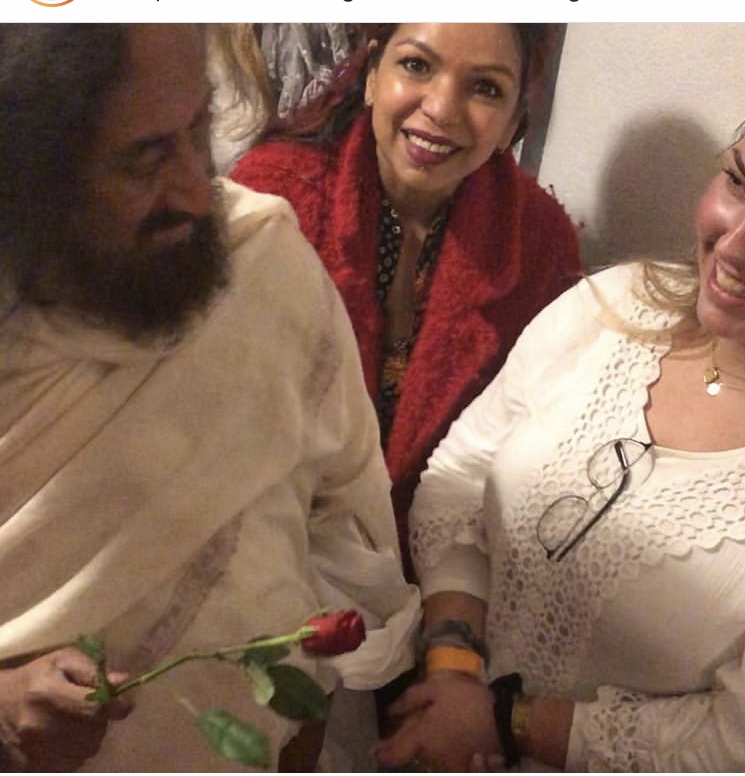
Above my friend Irma on New Year’s eve was performing seva in Germany in the centre’s kitchen. She had not managed to get to meet Sri Sri Ravi Shankar. Nevertheless her and her brother Edwin happily helped in the kitchen and were surprised by Sri Sri himself who came to thank the staff for their actions.
Sattva
“How selfish soever man may be supposed, there are evidently some principles in his nature, which interest him in the fortune of others, and render their happiness necessary to him, though he derives nothing from it, except the pleasure of seeing it.”
Adam Smith, The Theory of Moral Sentiments
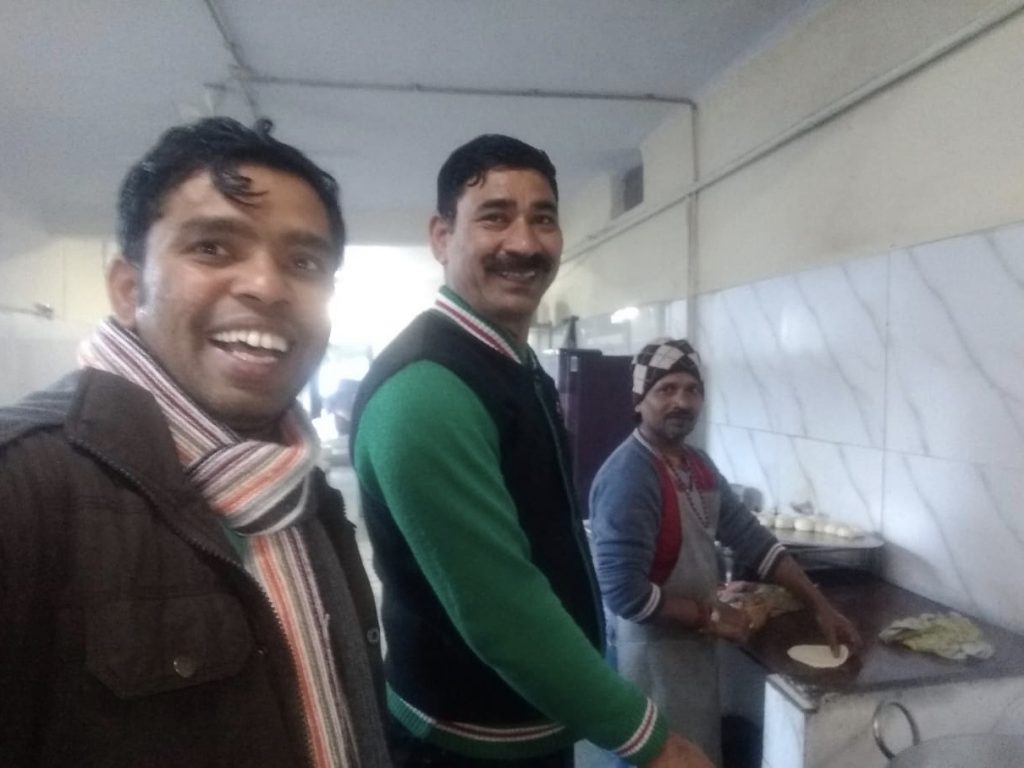
In Vedic philosophy and yoga, Sattva is a core concept which means purity. ‘Sat’ also means ‘truth’ in Sanskrit.
The Miriam Webster dictionary defines Sattva as “the purity and wisdom constituting one of the three gunas of Sankhya philosophy and leading to true enlightenment.”
In layman terms and in my experience sattva is an energy, a primordial force which permeates every part of our being. When you feel ‘sattvic’ you feel lighter, clearer, purer, happier.
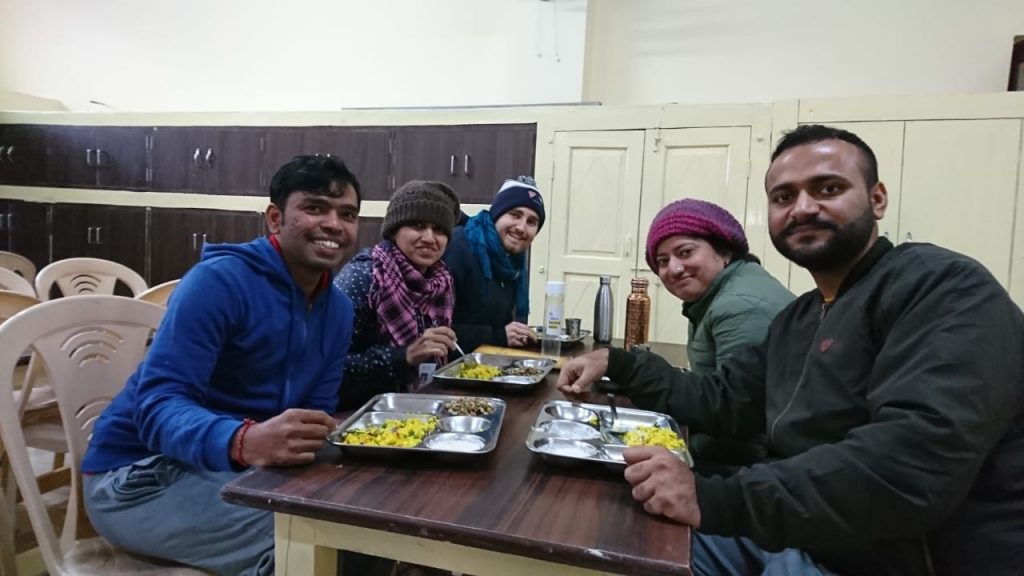
People who desire to lead a sattvic life search for truth, self-realisation, balance and higher knowledge over material gains and possessions.
Nutrition plays a key part in feeling sattva and ‘sattvic’ in yoga too. I have experienced the subtle changes which over time have really made an impact in my life. Rushton et al. (2019) provide a good summary on sattva, the vedas, yoga and ayurveda in their book of the same name.
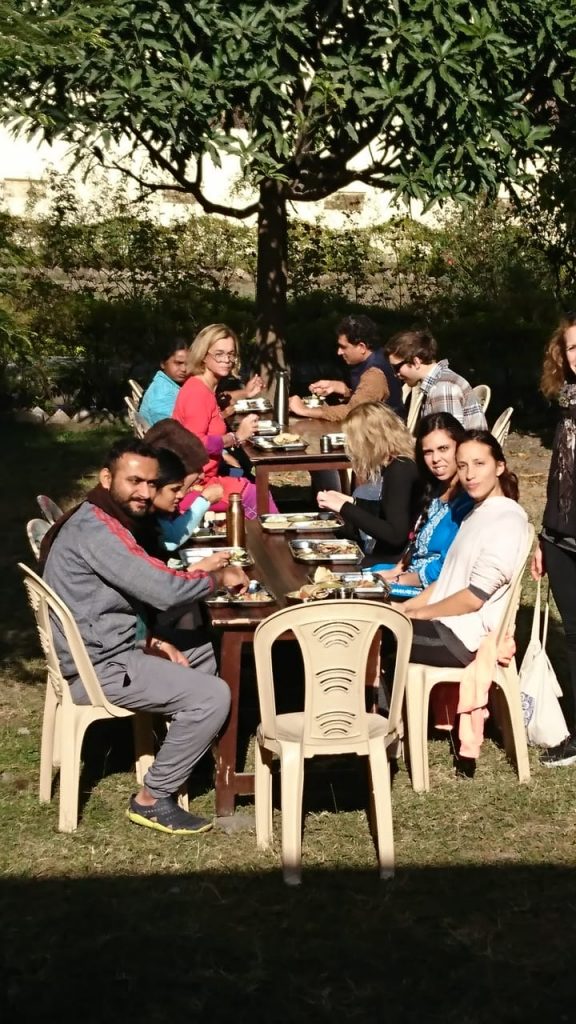
Our school provided very pure nutritious vegetarian meals. I was not fully vegetarian before I left. However I am finding myself transitioning to such a diet. It’s a very personal journey and a very personal choice.
Satsang
“Somewhere, underlying all the other signals, is a continual music. Termites make percussive sounds to each other, bats are obliged to make sound almost ceaselessly to sense by sonar all the objects in their surroundings. Drumming created by beating the feet is used by prairie hens, rabbits and mice. The head is banged by woodpeckers and certain other birds. Fish make sounds by clicking their teeth, blowing air and drumming with special muscles. Gorillas beat their chests for certain kinds of discourse. Even turtles, alligators, crocodiles, earth worms make sounds.”
Thomas Lewis, The Music of This Sphere
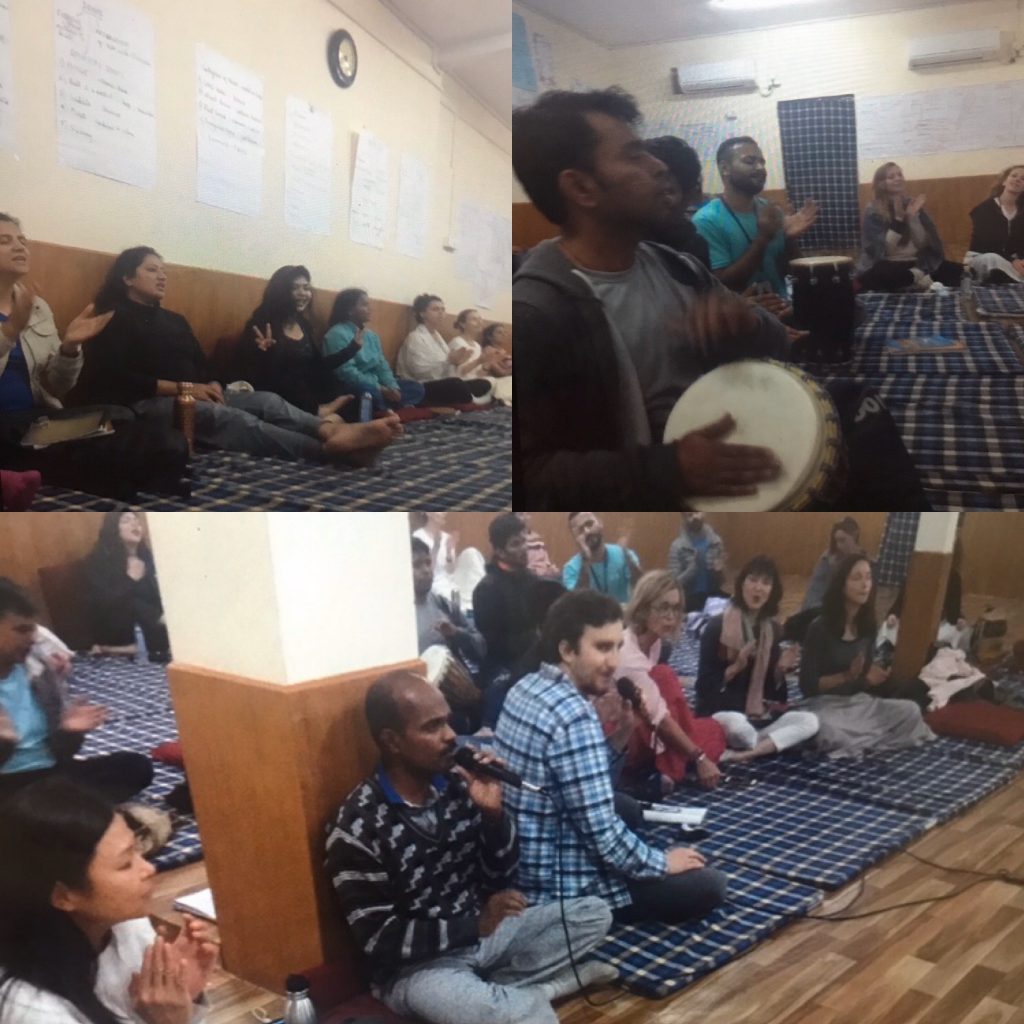
“Satsang means two things:1. Intellectual discussion, which is a left brain activity 2. Singing, which is a right brain activity. Both are necessary.”
Sri Sri Ravi Shankar
One of the key elements of our training was our evening Satsang which we all very much looked forward to, though it could be unnerving for the new initiates like some of us Westerners. Satsang included both intellectual discussions and a joyful celebration through singing in all the participants’ languages.
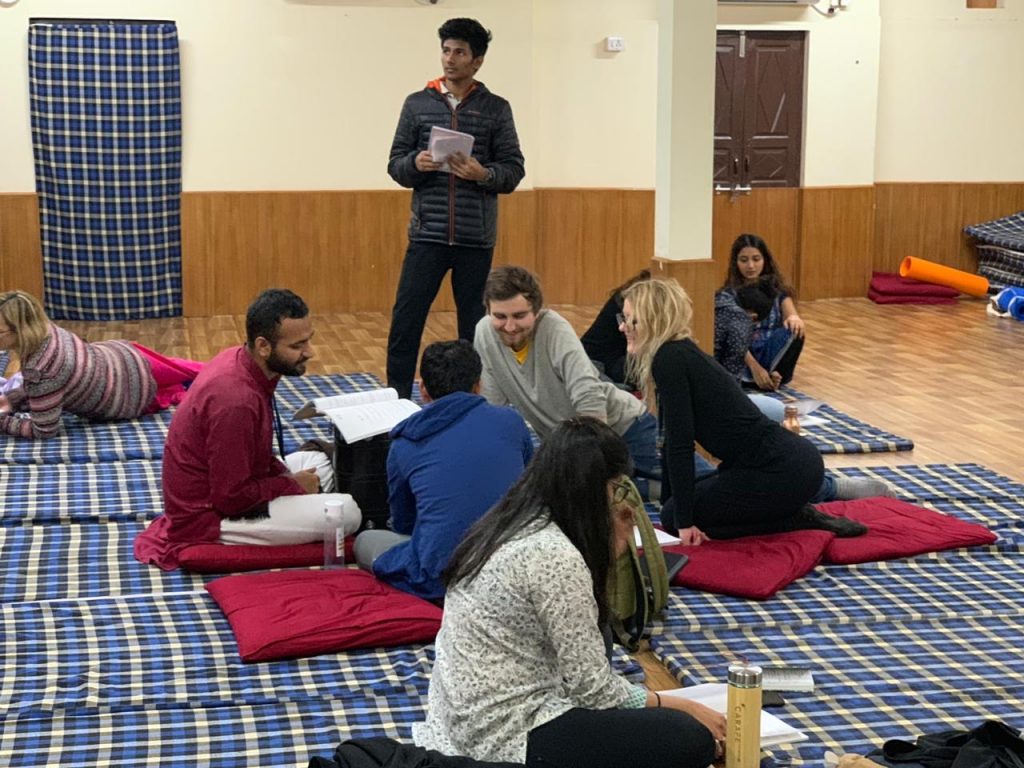
Sri Sri Ravi Shankar explains that in most everyday activities our minds are separate from each other, we each have separate opinions and thoughts. But when we sing and dance together, we are one. It is a common experience that parties relax you after a hard week’s work, satsang takes this to the next level by being more healthy, and therefore more relaxing. (art of living).
“During the course what was really important to me was the knowledge, company of the truth and applying the knowledge in every day of the course. One of the teachers Sri Yogi Umesh did an amazing job of not only teaching the knowledge but by living the knowledge by example. If one can live it then one can easily teach it. “
James Carter, Psychology Student, USA
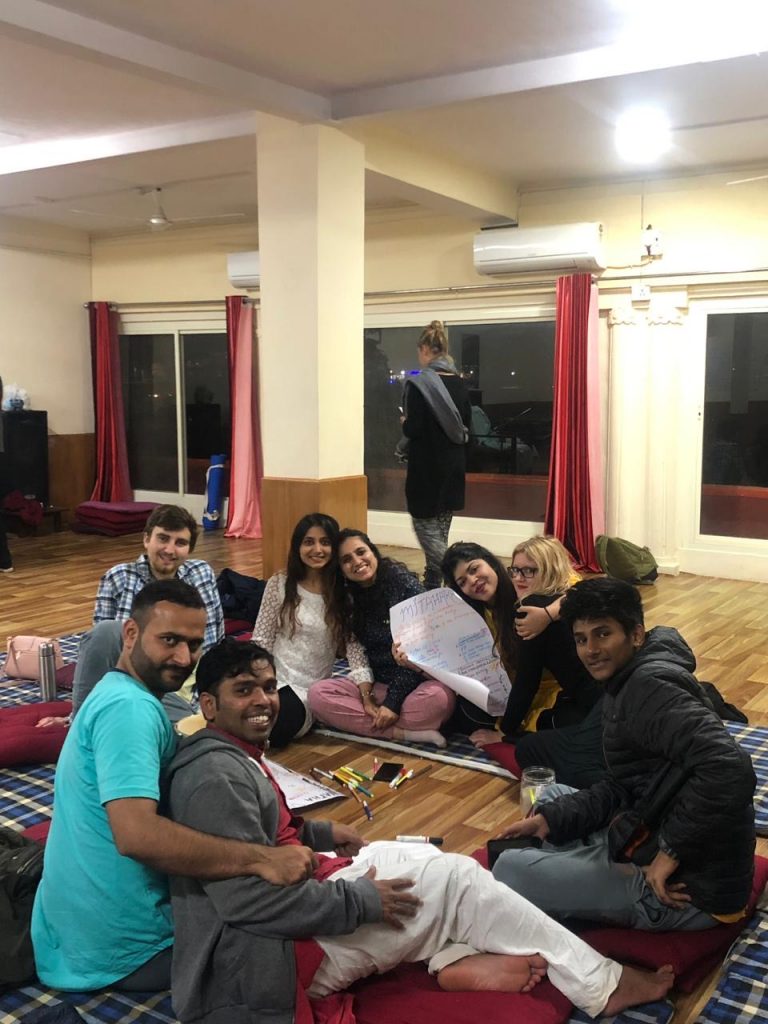
“The need to make music to listen to it, is universally expressed by animals and human beings. I cannot imagine even in our most primitive times, the emergence of talented painters to make cave paintings without their having been, near at hand, equally creative people making song. It is like speech, a dominant aspect of human biology.”
Thomas Lewis, The Music of This Sphere
Satsang brought us together in a very special way hard to describe in words. Like yoga it has to be experienced.
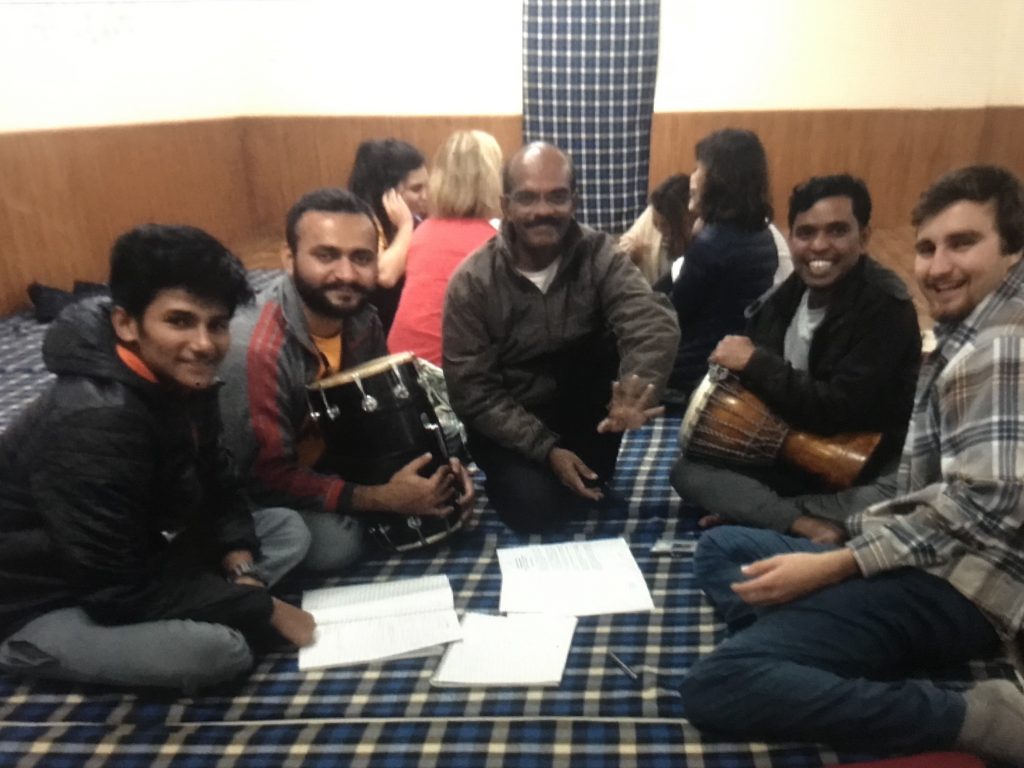
Sisterhood, Brotherhood, Dorm Life and Friendship
“In true friendship, in which I am expert, I give myself to my friend more than I draw him to me. I not only like doing him good better than having him do me good, but also would rather have him do good to himself than to me; he does me most good when he does himself good.”
Michel de Montaigne, On Friendship, 1580

One of the most profound element of our Yoga TTC was the enduring friendship bonds we have made with our dorm sisters and brothers, as well as with the rest of the groups, the people in the Ashram and in Rishikesh. The connection and friendship are so strong that we are in contact from our respective countries, supporting each other and exchanging ideas on our practice. Some of us have travelled together again to meet with Sri Sri Ravi Shankar in Germany for New Year’s eve and have plans to continue our training together.
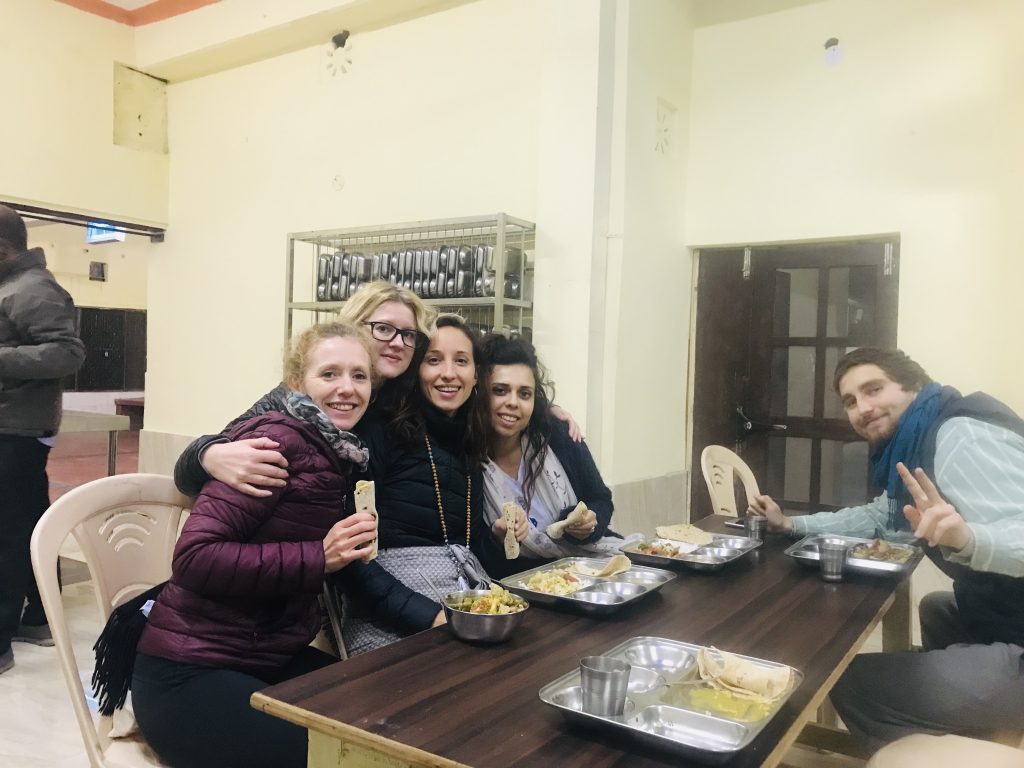
Personally, this was for me one of the main “dazzlement in surprise” part of the training. As a self-confessed introvert who enjoys solitude and her own quiet time, I found myself actively seeking my dorm sister’s company and that of my brothers. I was looking forward to spending time together, to practice and study together, chatting together at our breaks and spending any short free times together. This was until now an ‘improbability’ for me and so miracles happen!

On photo below, we spent some time with our Ashram security staff. These are moments which we will never forget.
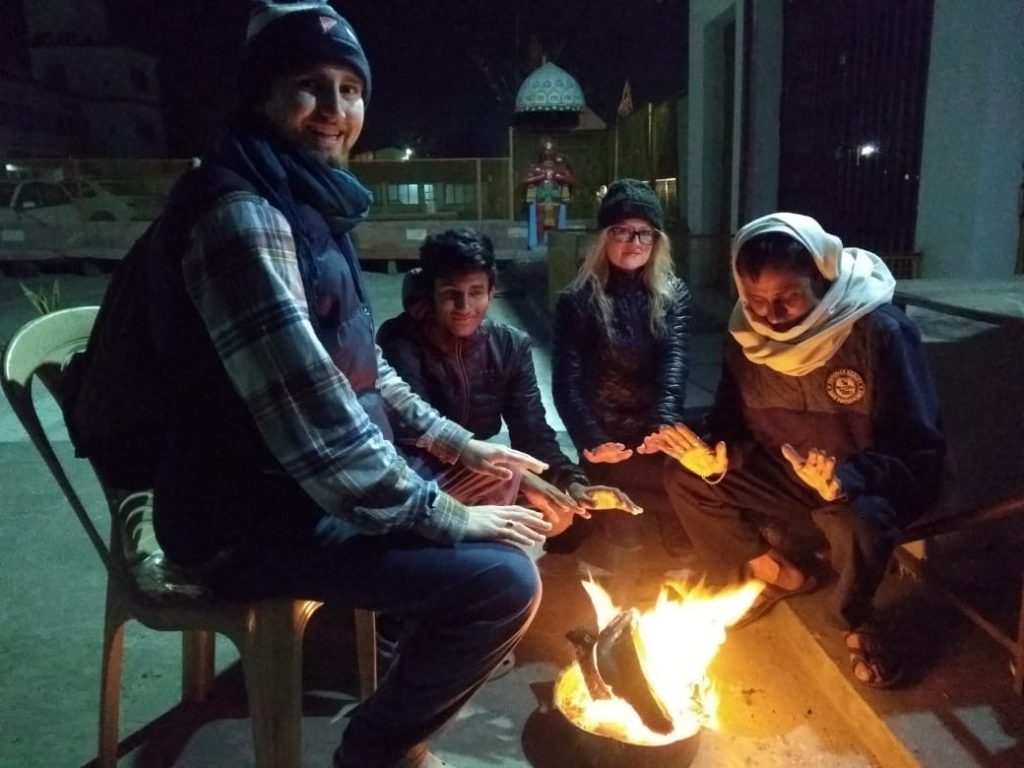
I could not have anticipated the connection I would feel with my dorm sisters, brothers and with the rest of the group. This was one of the many jewels of the course and how ‘yoga unites’.
“The Apprentice” Task – Putting It All Together for Rishikesh and Celebration!
“The best moments in our lives are not the passive, receptive, relaxing times . . . The best moments usually occur if a person’s body or mind is stretched to its limits in a voluntary effort to accomplish something difficult and worthwhile”
Mihaly Csikszentmihalyi
Once we had covered the core elements of our syllabus, we were surprised by a very ‘The Apprentice’ type task whereby the group had to come together under group leaders to create an evening event.
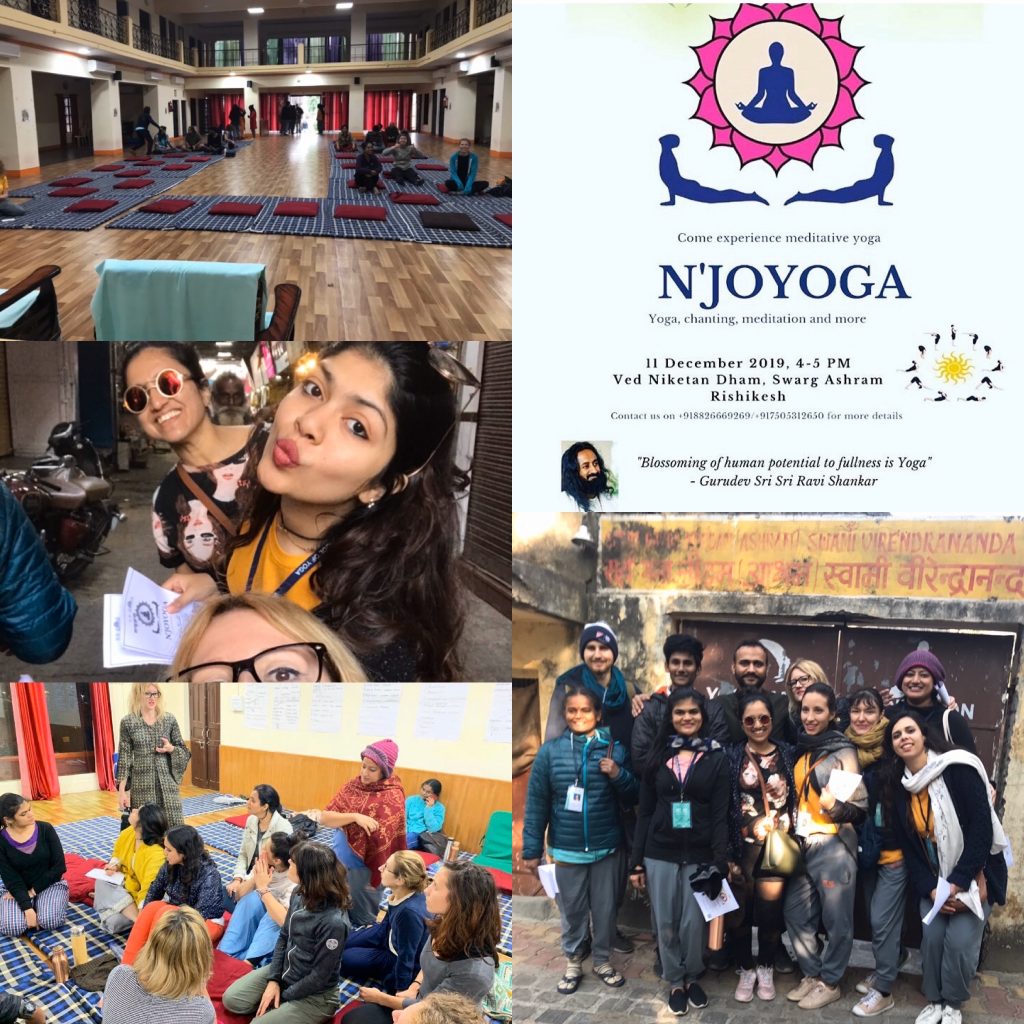
This comprised choreographies of physical yoga dance and yoga practice for the whole congregation to enjoy, as well as chants, satsang, meditations to promote and showcase all the elements of our yoga training and school.
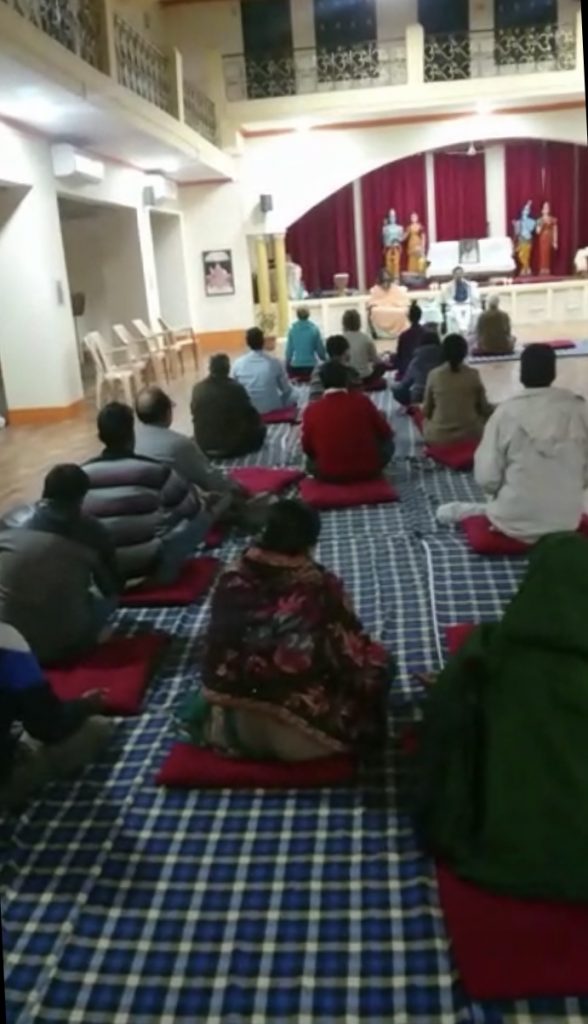
This was to take place within 48 hours of being made aware of the project throughout the city culminating with the evening event in the main grand hall.
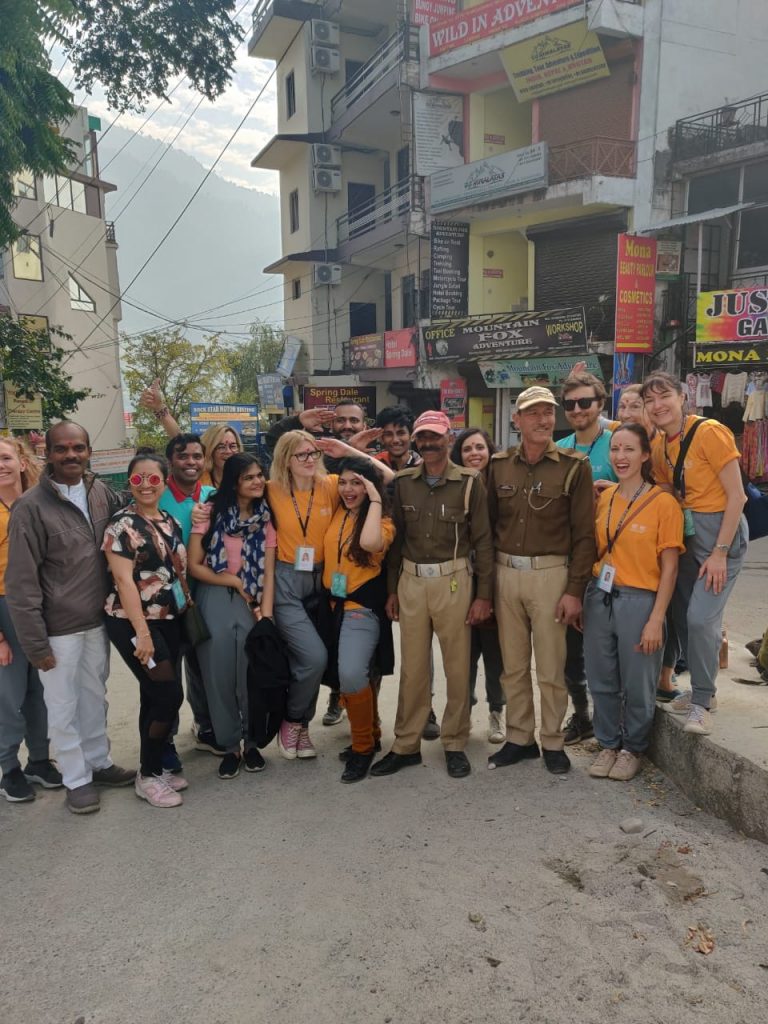
The whole Rishikesh city including its spiritual community was to be invited.
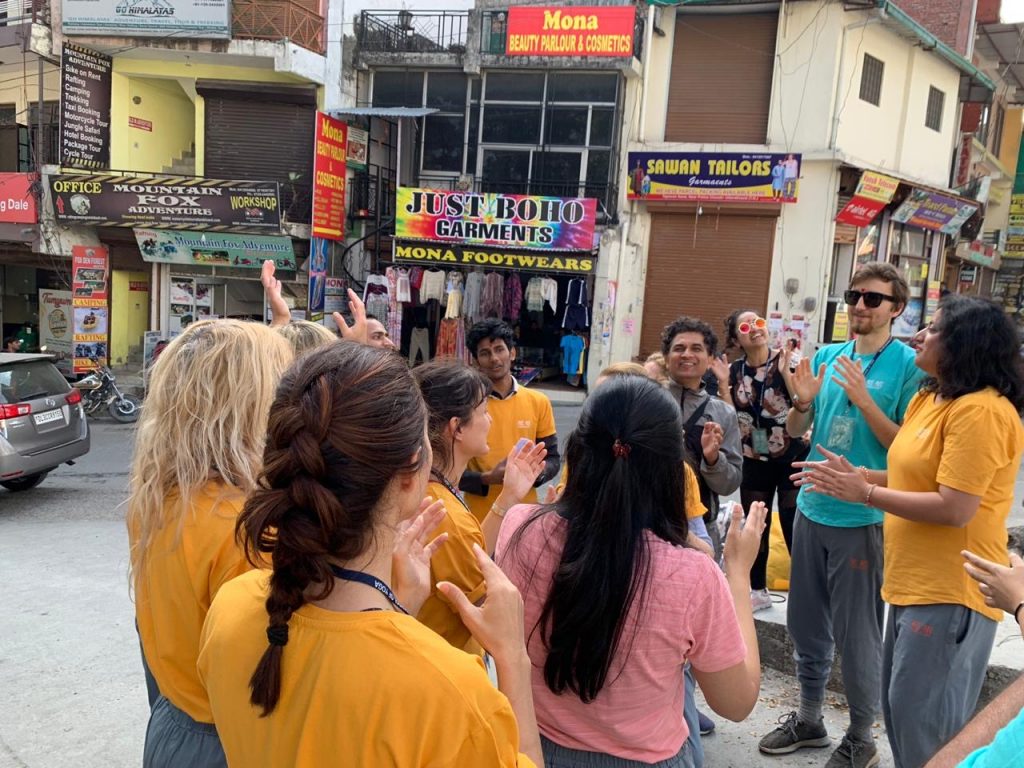
The whole thing was daunting but ultimately again a great training and source of joy.
Exams, Graduation and Celebrations
We had opportunities to teach asanas, yoga nidra and meditation classes very early on and throughout the training, and also had exams regularly.

This approach prepared us well for the final practical and theoretical exams.
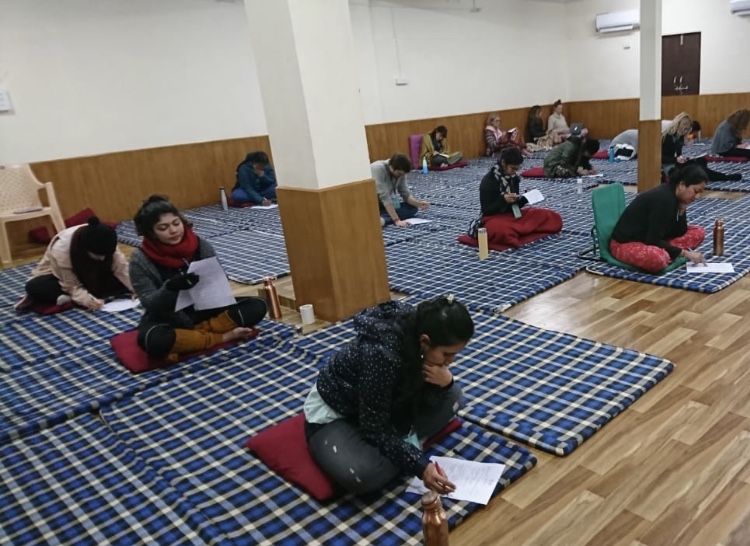
The final week was different as it included working on our event project as well as having more opportunities to present taught classes to our fellow trainees in front of our teachers too.
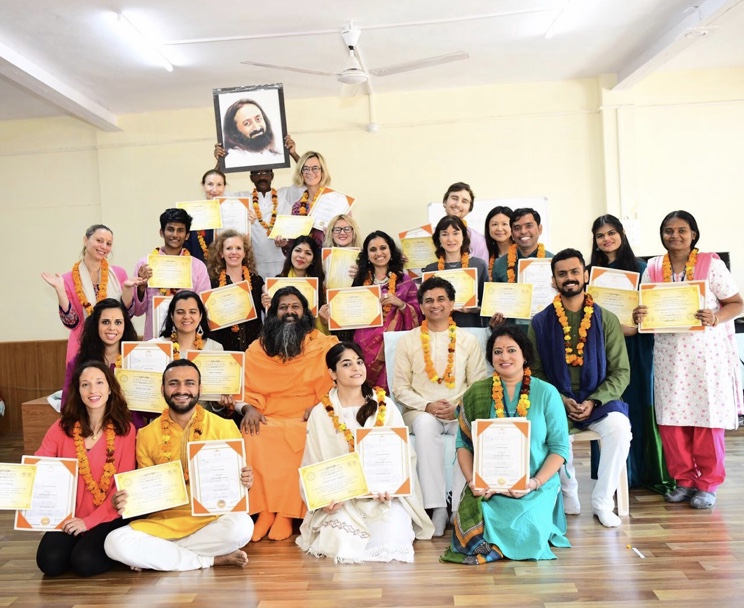
Samadhi – Bliss – Pure Awareness
“Tad eva artha matra nirbhasam svarupa shunyam iva samadhi”
“When effortlessly dwelling in meditation, the difference between oneself and the object of meditation dissolves. This state is samadhi, an undisturbed equanimous state of mind.”
Yoga Sutra 3.3. Patanjali
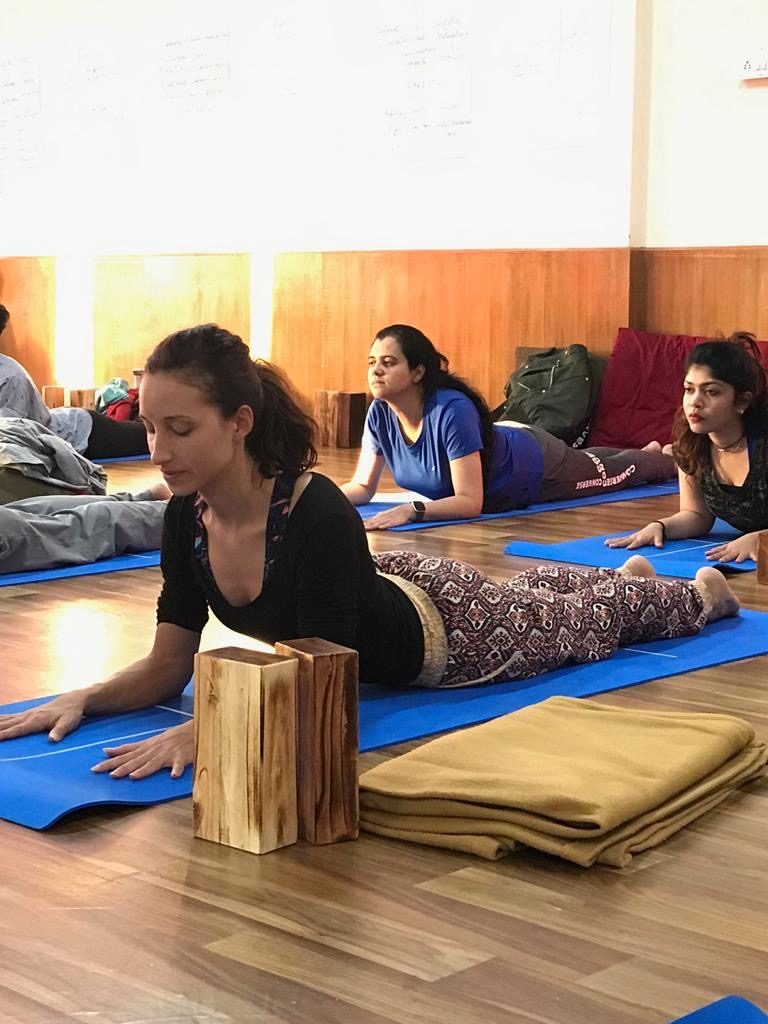
“Actuellement le yoga fait parti integrante de mon quotidien. Avant c’etait un loisir. Maintenant ca fait parti de ma vie et de mon quotidien parce que ca m’apporte un tel bien etre et serenite que je ne souhaite pas m’en passer.”
“Currently yoga forms an integral part of my daily life. Before training, yoga was a hobby for me but now my practice is included in my daily routine. This is because the calm and peace I have felt I simply do not want to live without”.
Veronique Marais.
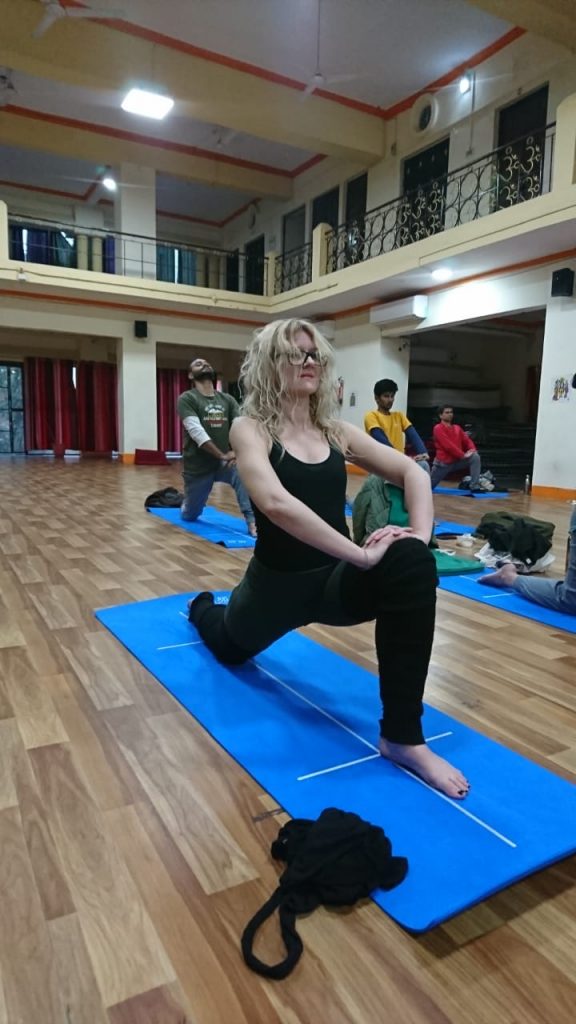
“The soul which before was cold is now ardent, which before was dark is now shining, which before was hard is now mollified; all is infused with the divine essence.”
Francois Louis de Blois
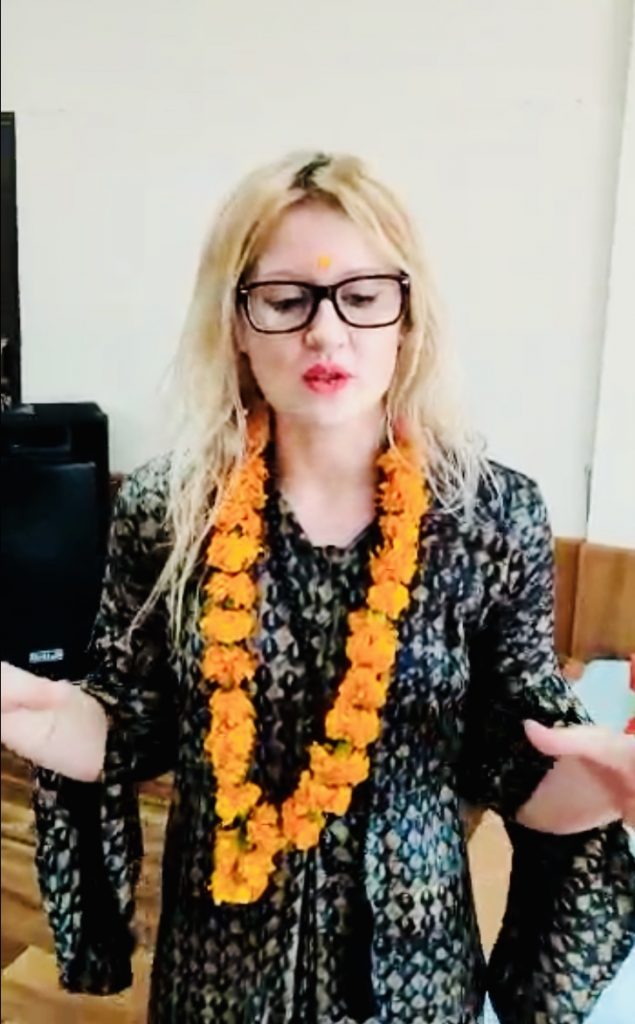
The yoga teacher training with Sri Sri school of Yoga was an unforgettable experience. The training was gruelling, of the highest standard and at times relentless. Yet the ancient Indian yogic techniques we learnt and were taught to transmit were invigorating. The way we learnt to connect to ourselves, to others and to the world at large, helped us reach a different type of awareness which is very much available to all to access.
So how can we train so intensely physically, emotionally, intellectually and spiritually, learning new concepts in sanskrit, continuously over three weeks and feel energised? Maybe we experienced Samadhi which continued after class and to this day. Life will take over and our practice becomes essential, but we have touched that place inside us and we have also connected with others who have felt it too.
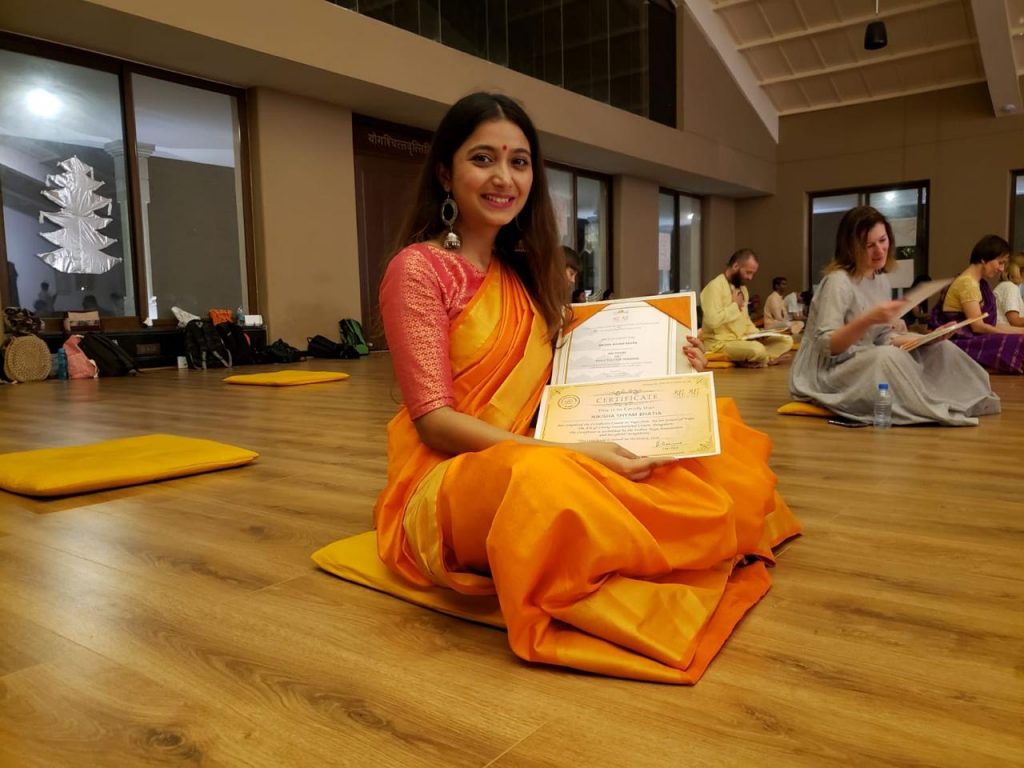
In Sri Sri Ravi Shankar’s words:
“Samadhi is as though you are not there: see, whenever you get very deep rest and a sense of total peace within yourself, know that you have experienced a little bit of Samadhi. Unless you touch that area deep inside, you don’t get that freshness and deep rest and essence of joy or contentment. We sit for a little while, and then afterwards, as usual, things will move — but with practice, then it comes to a stage where Samadhi doesn’t leave you, you don’t need to hold onto it, and that stage doesn’t leave you at all.”
The human values and qualities of honour, respect, friendship and the feelings of joy, peace and happiness we felt will stay with us forever.
“I am truly grateful and blessed to be able to participate in such an amazing program and I hope everyone can experience this too.”
James Carter, Psychology Student, USA
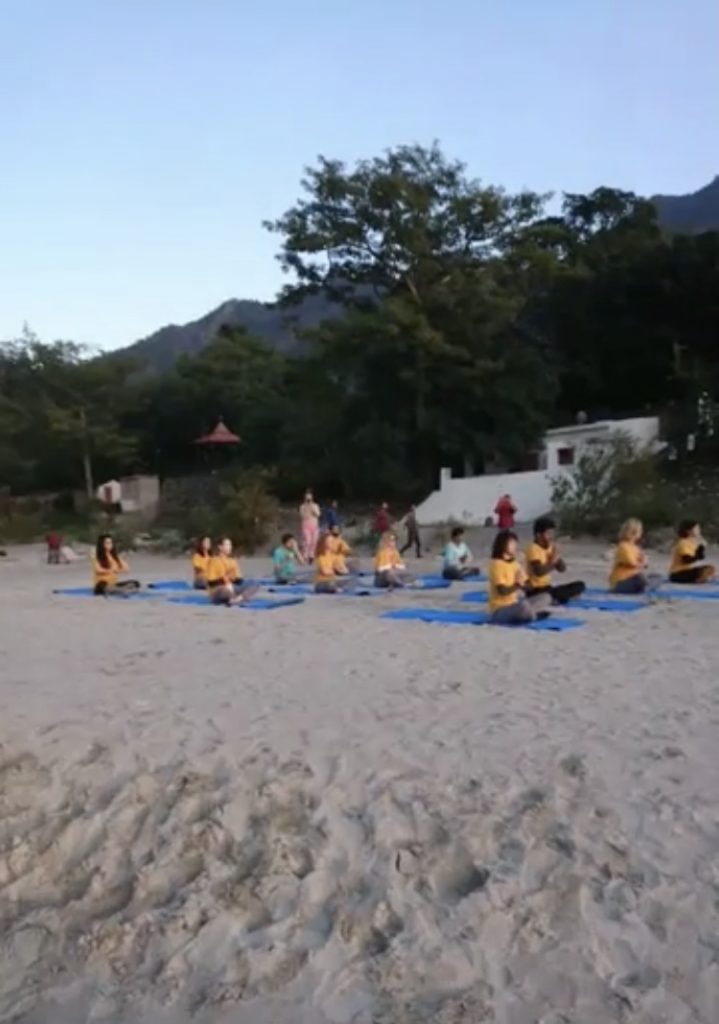
“As you hold the Certificate in your hand by the end of the course, you will feel a sense of achievement, pride, but most importantly, you will feel a sense of gratitude.”
Nikisha ‘Nikky’ Bhatia
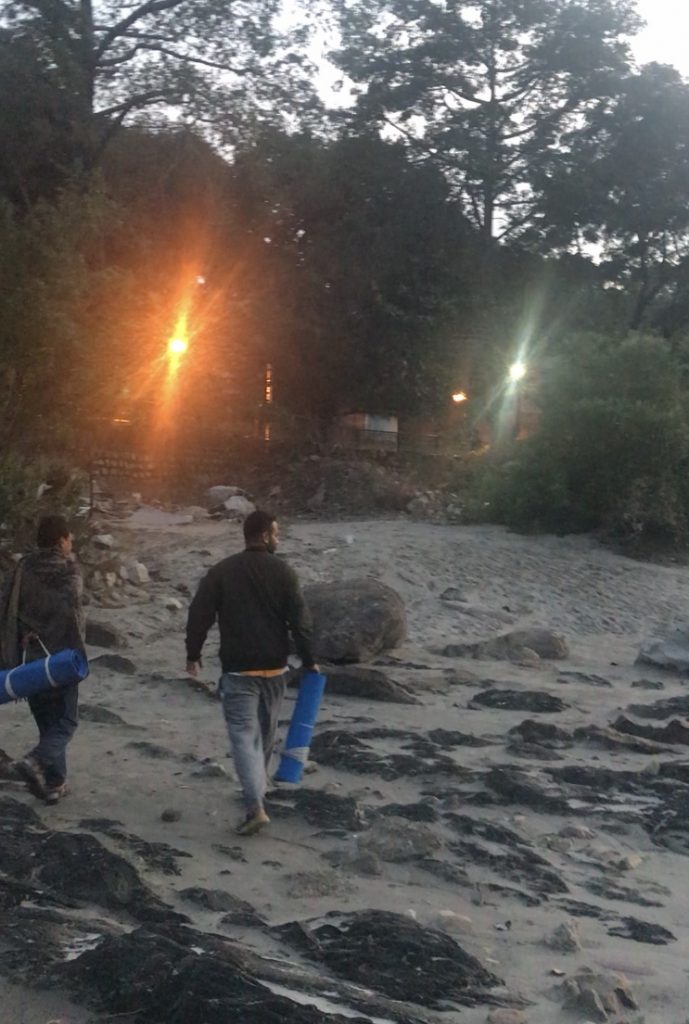
We are not affiliated, sponsored or endorsed by Sri Sri school of Yoga or Art of Living. This article is based solely on our own experience. The use of any trade name or trademark is for identification and reference purposes only and does not imply any association with the trademark holder of their product brand.
References
Art of Living teachings: www.artofliving.org
Csikszentmihalyi, M. (2002). Flow: The psychology of happiness: The classic work on how to achieve happiness. London, UK: Rider.
Csikszentmihalyi, M. (2013). Flow: The psychology of optimal experience. New York, NY: Random House.
De Montaigne, M. (2004) On Friendship. First published in 1580. Penguin Classics.
Einstein, A. (1932) On Youth.
Hawley, J. (2011) The Bhagavad Gita: A Walkthrough for Westerners. New World Library. California.
Miriam Webster online dictionary: https://www.merriam-webster.com/dictionary/sattva.
Mohan, J. (2005). La Civilisation la plus antique; Voltaire’s Images of India.
Journal of World History. Vol. 16, No. 2 (Jun., 2005), pp. 173-185.
Rushton, P & Rushton, E. (2019) Sattva: The Ayurvedic Way to Live Well. Hay House UK.
Thoreau, D. (1989) Walden. edited by J. Lyndon Shanley. Princeton University.
Thomas, L. (1995) Late Night Thoughts on Listening to Mahler’s Ninth Symphony. Penguin; Reprint edition (25 May 1995).
Thomas, L. (1971) The Music of This Sphere. The New England Journal of Medicine. Address reprint requests to Dr. Thomas at the Department of Pathology, Yale University School of Medicine, 310 Cedar St., New Haven, Conn. 06510.
Thomas, L. (1978) The Lives of a Cell: Notes of a Biology Watcher. Penguin Books. New York. New York.
Smith, A. (1759). The Theory of Moral Sentiments. “printed for Andrew Millar, in the Strand; and Alexander Kincaid and J. Bell, in Edinburgh”.
Sri Sri Ravi Shankar. Patanjali Yoga Sutra. Commentary by Art of Living. Art of Living app.
Sri Sri Ravi Shankar. (2012) The Upanishads and the Vedas (Various Volumes). Westland Publications Private Limited and Sri Sri Publications.
Sri Sri School of Yoga Teacher Training Manual. Copyright 2019.
For more information on the teacher training visit:https://srisrischoolofyoga.org/in/create-registration/?id=438033
Swami Swatmarama and Pancham Sinh. (2012). The Hatha Yoga Pradipika. CreateSpace Independent Publishing Platform.
